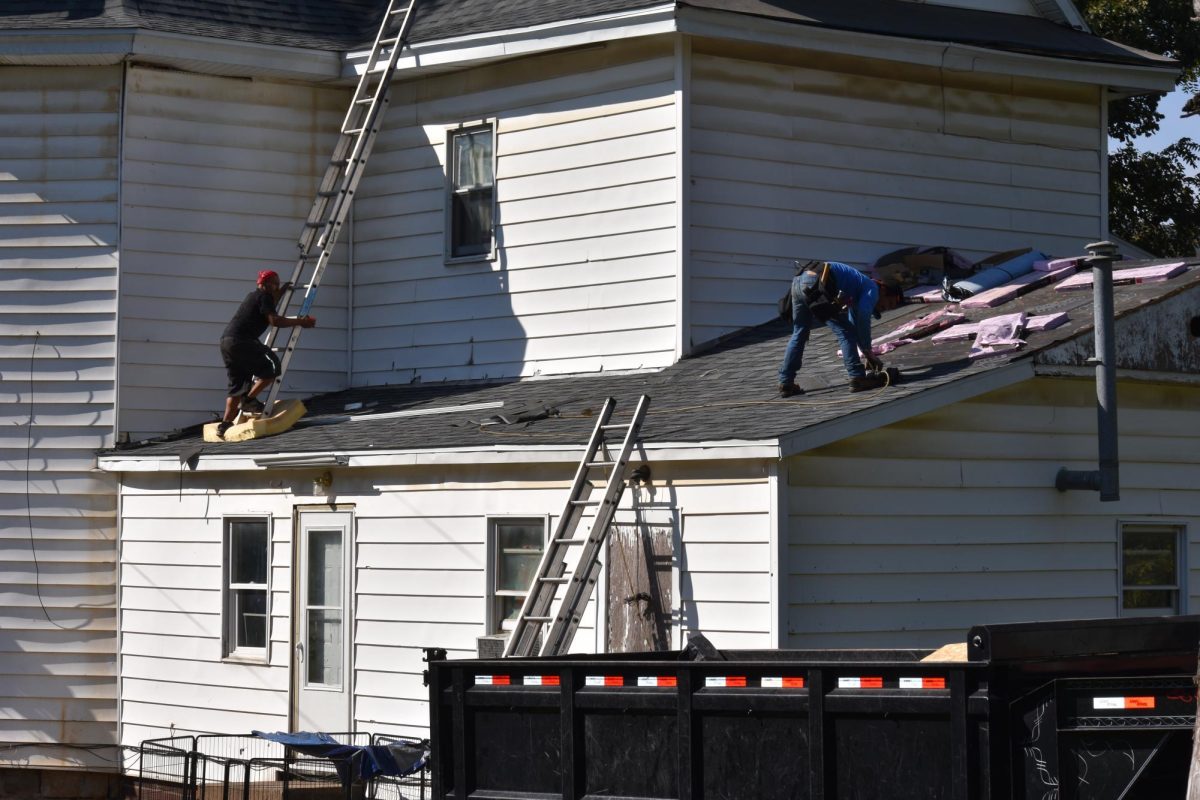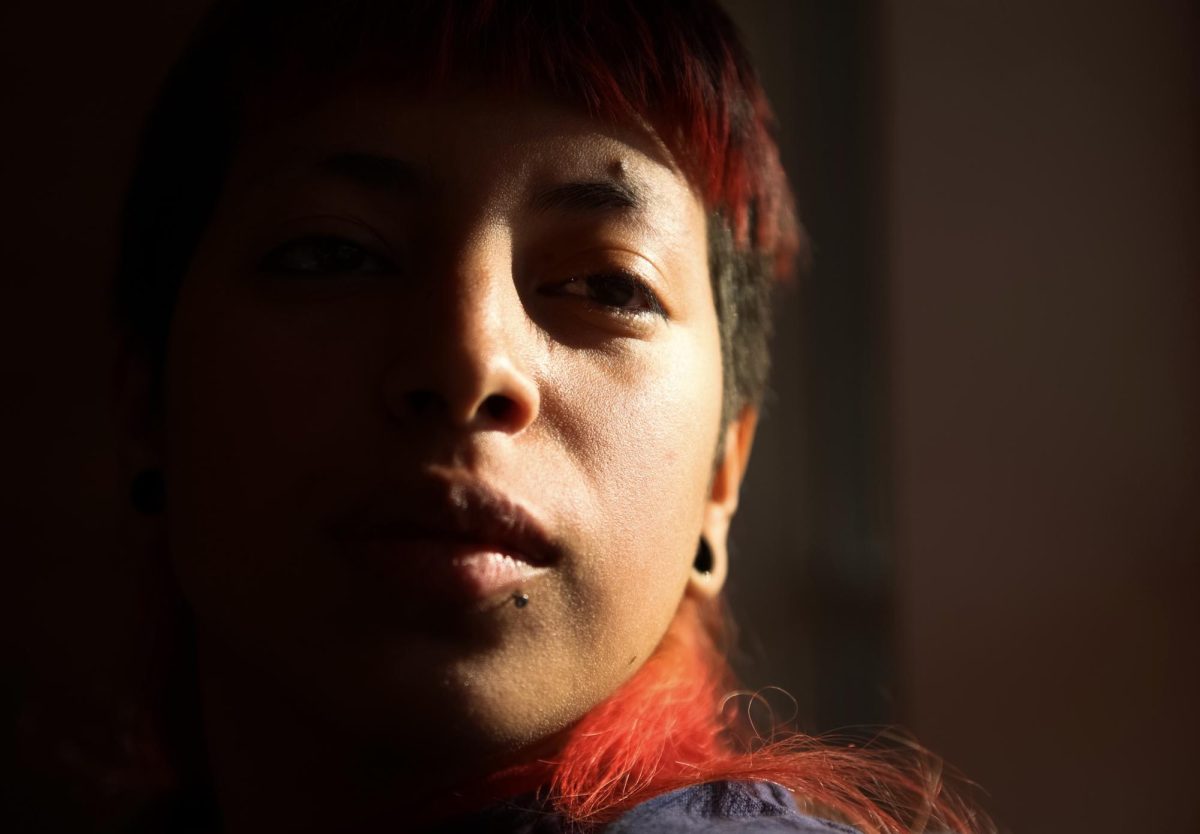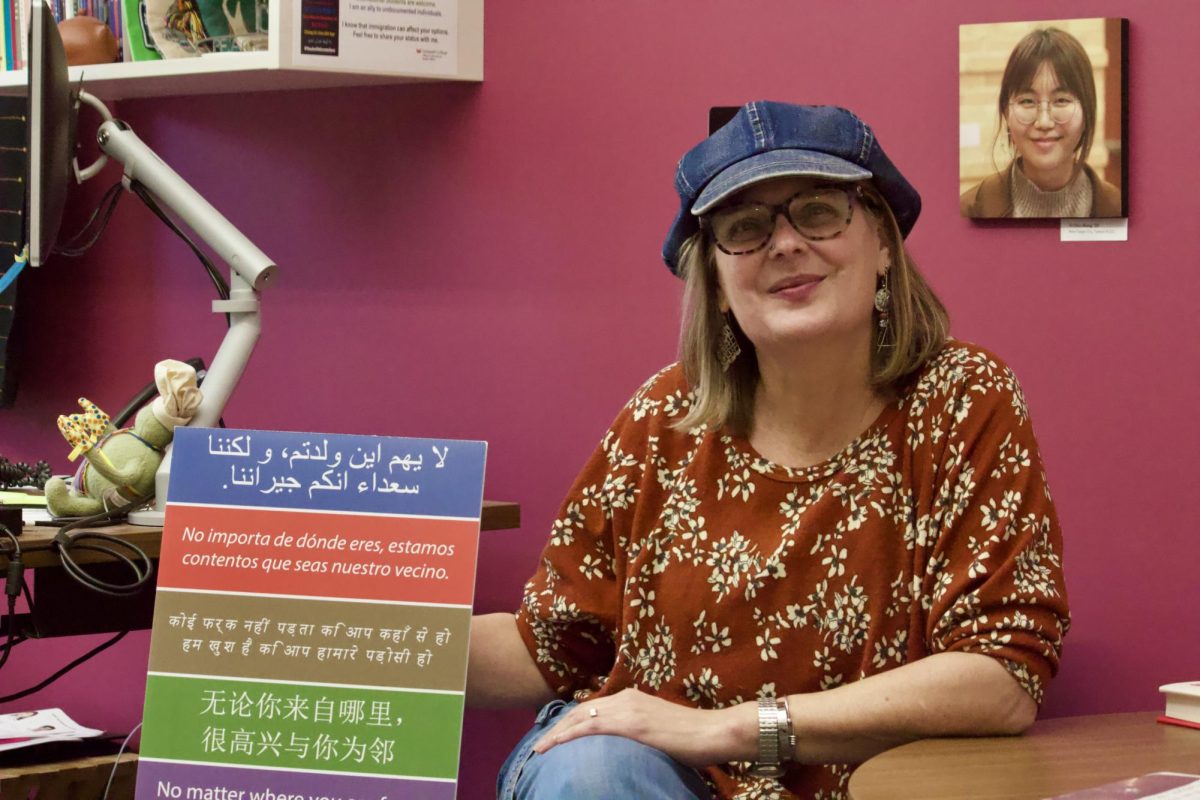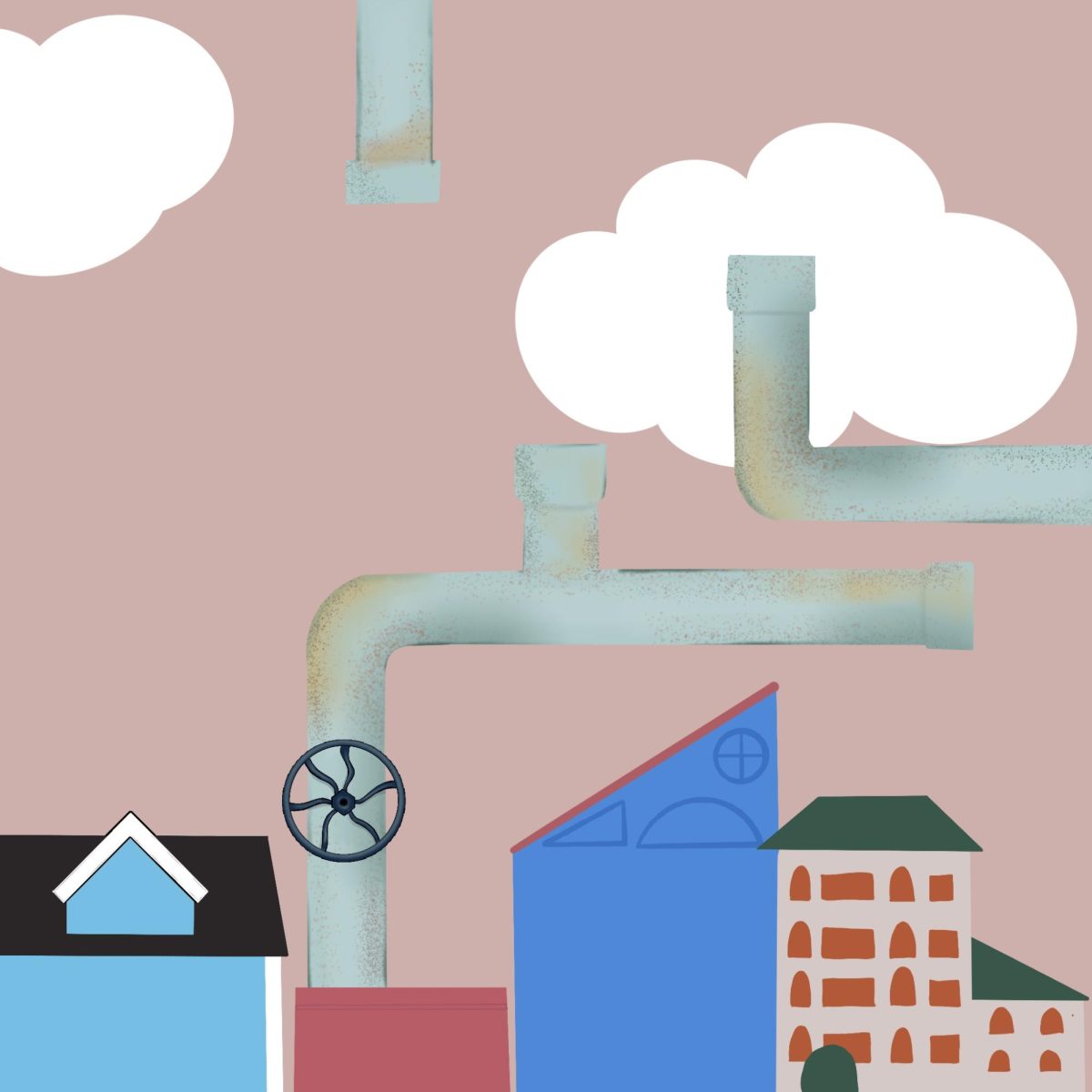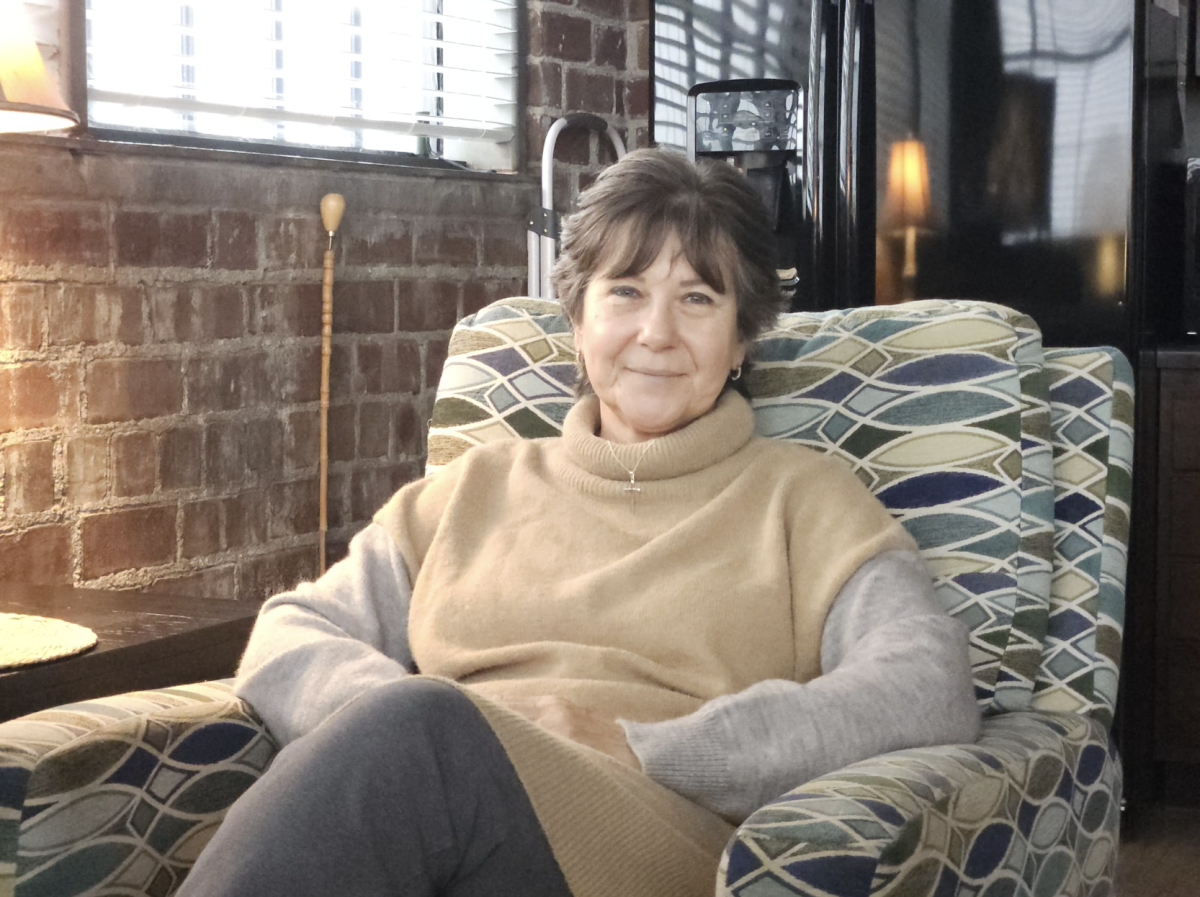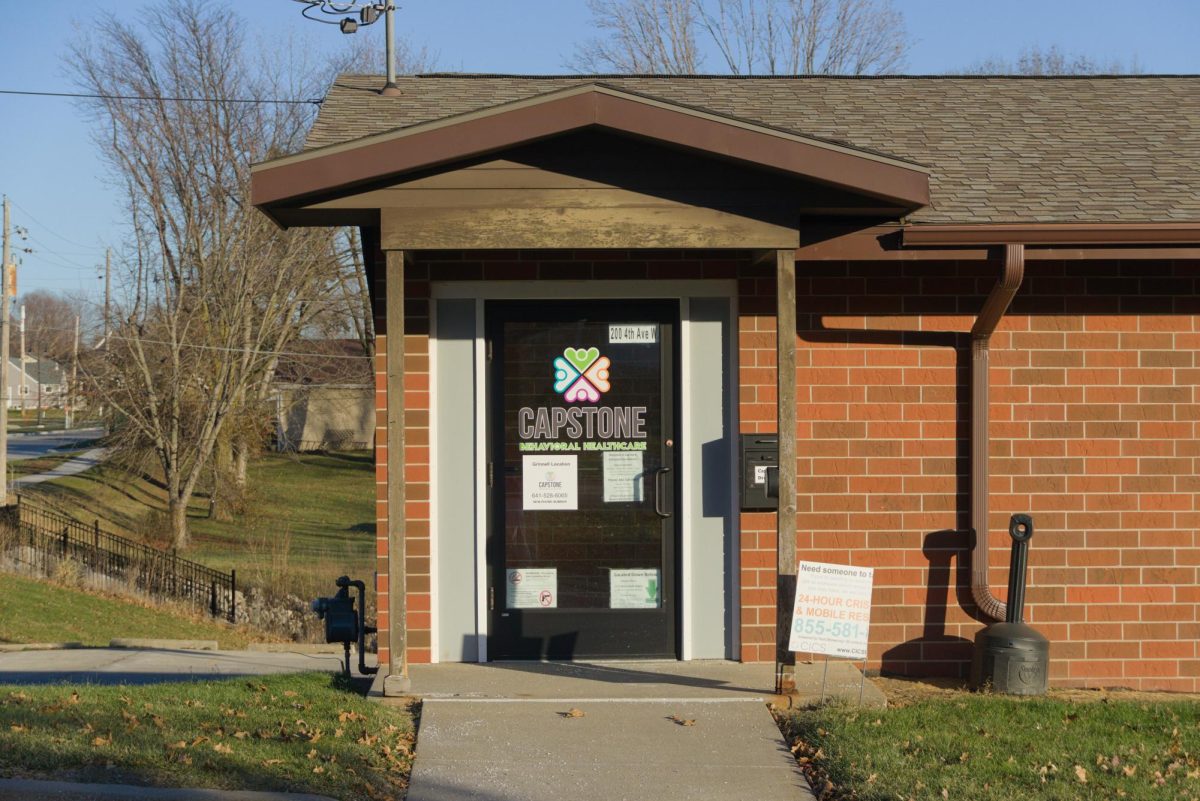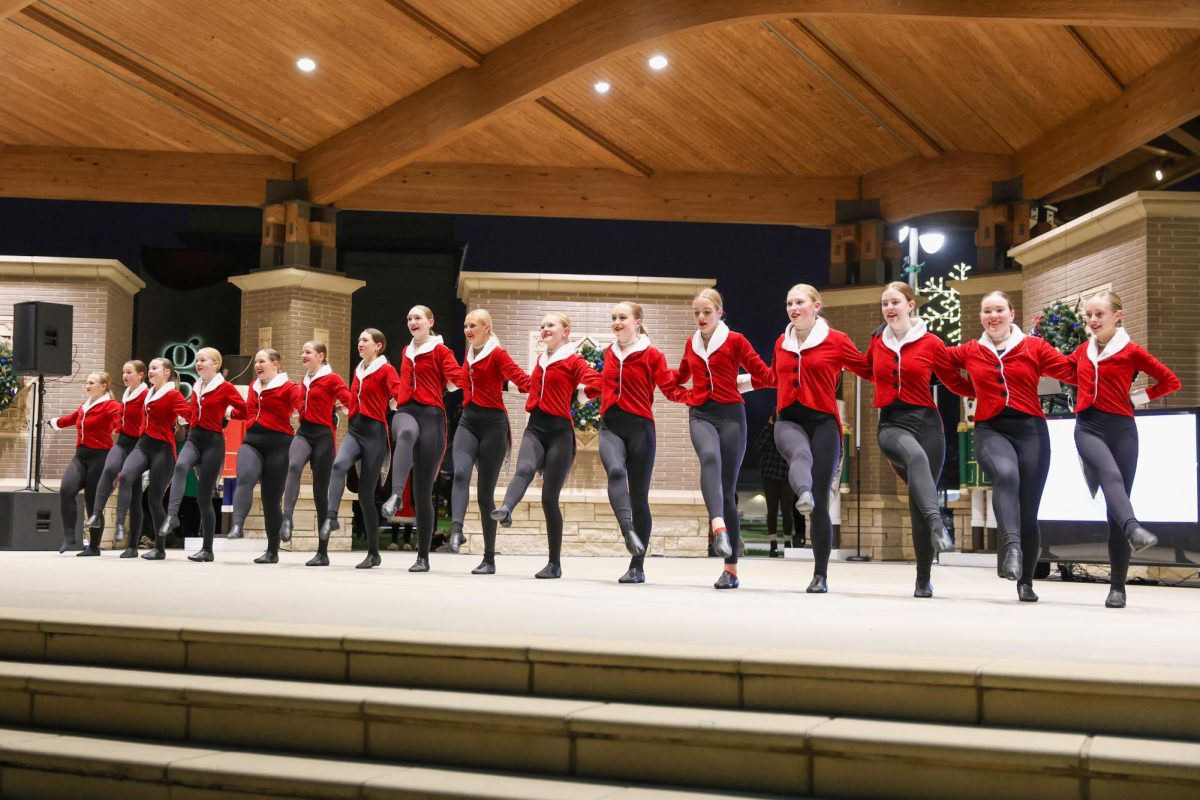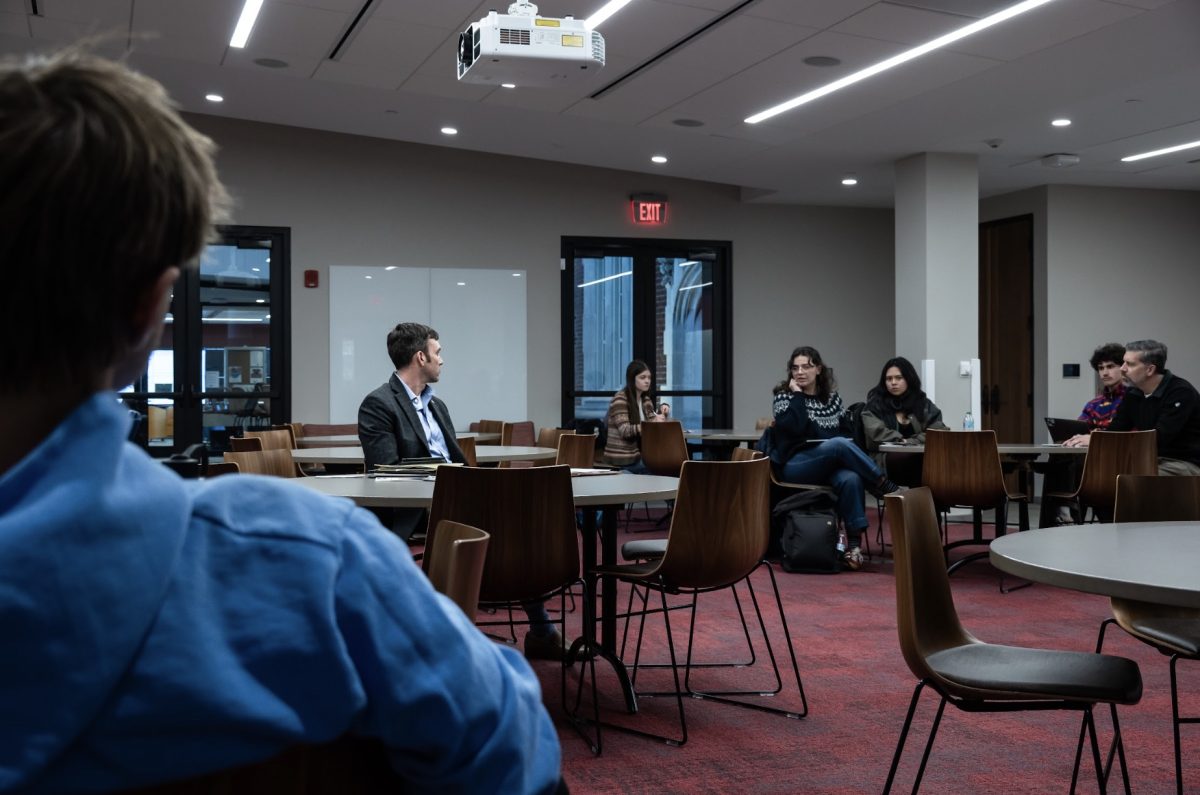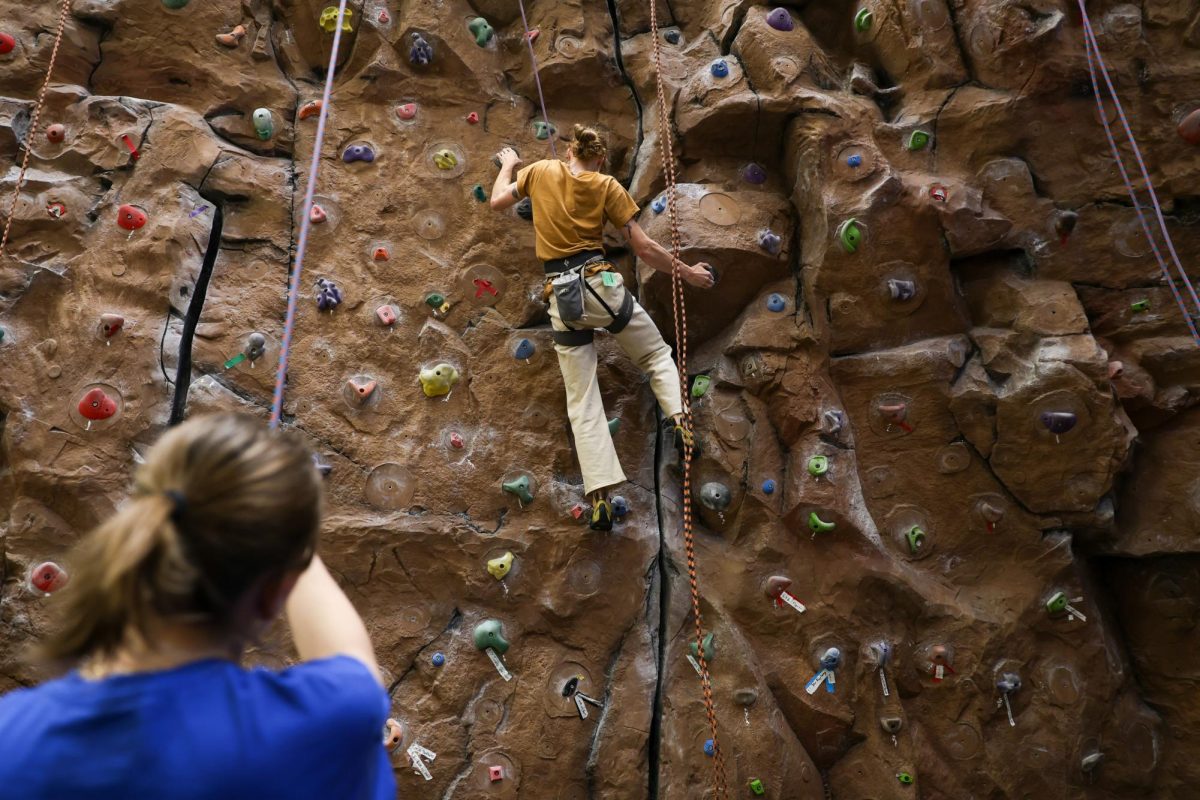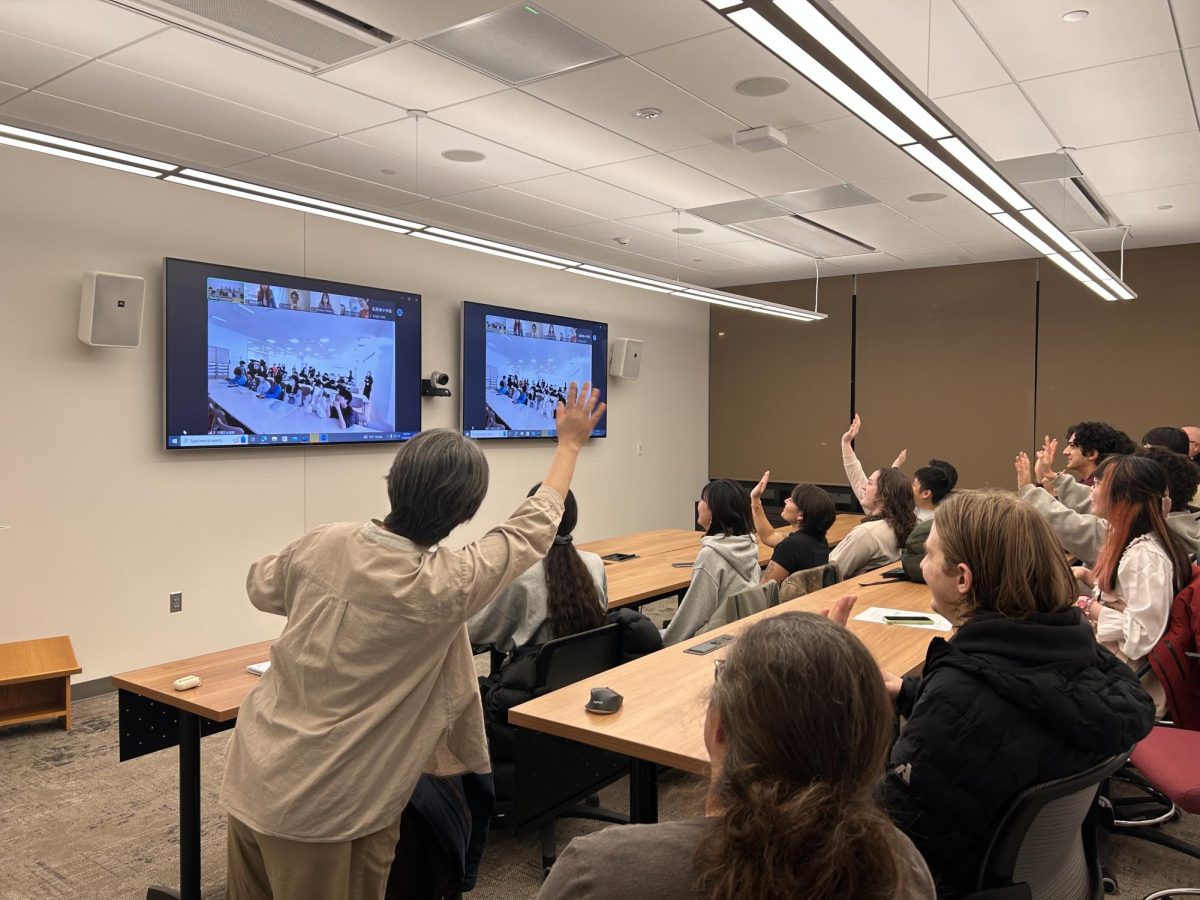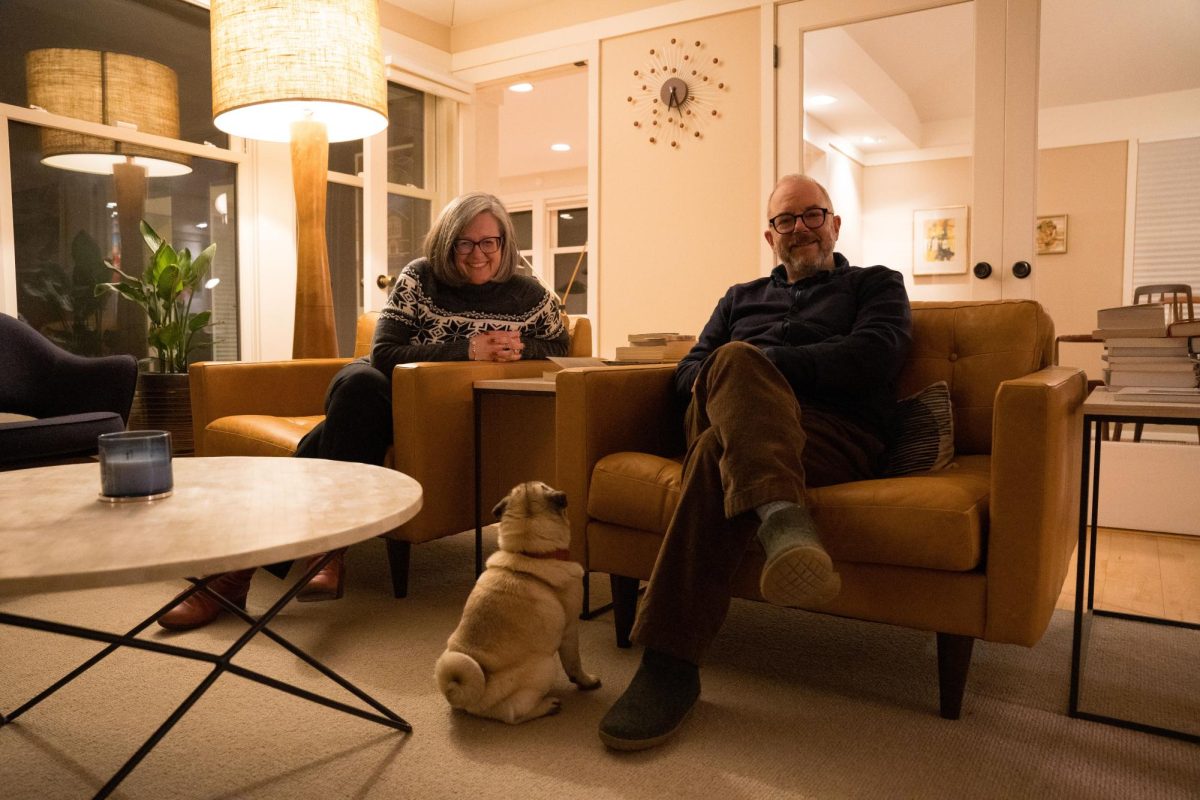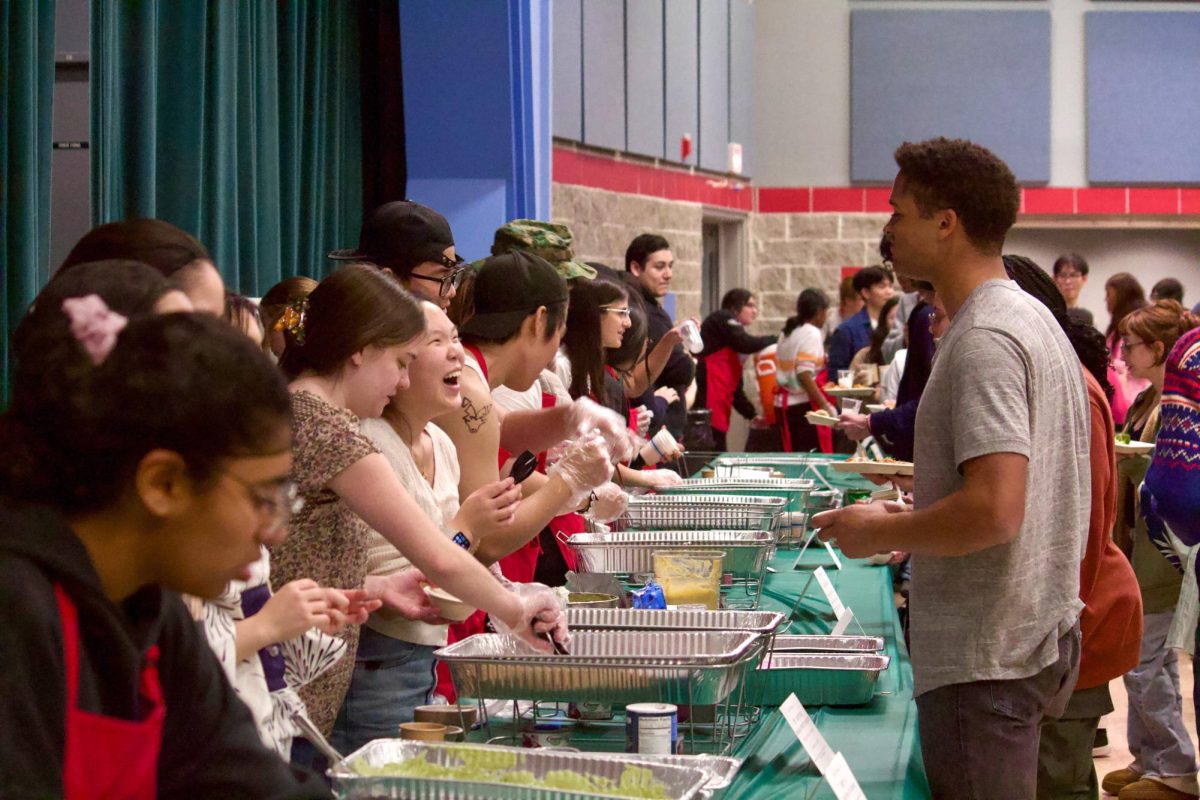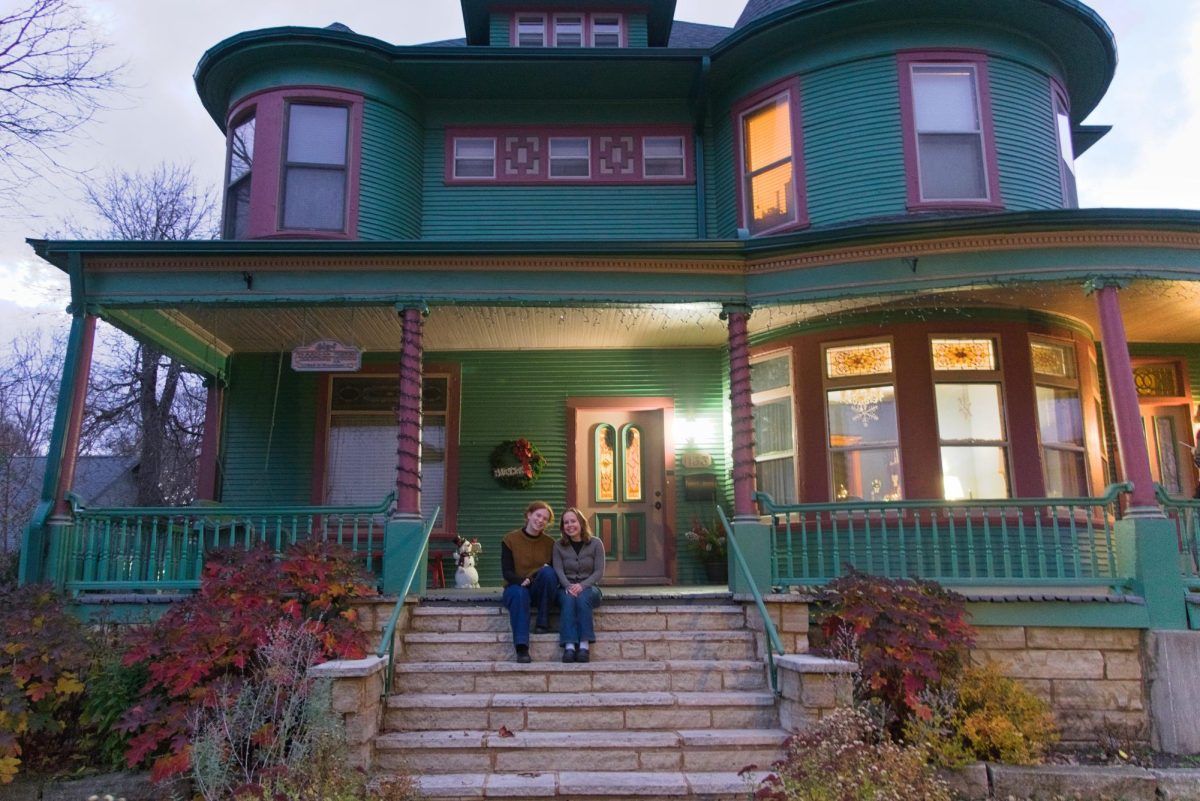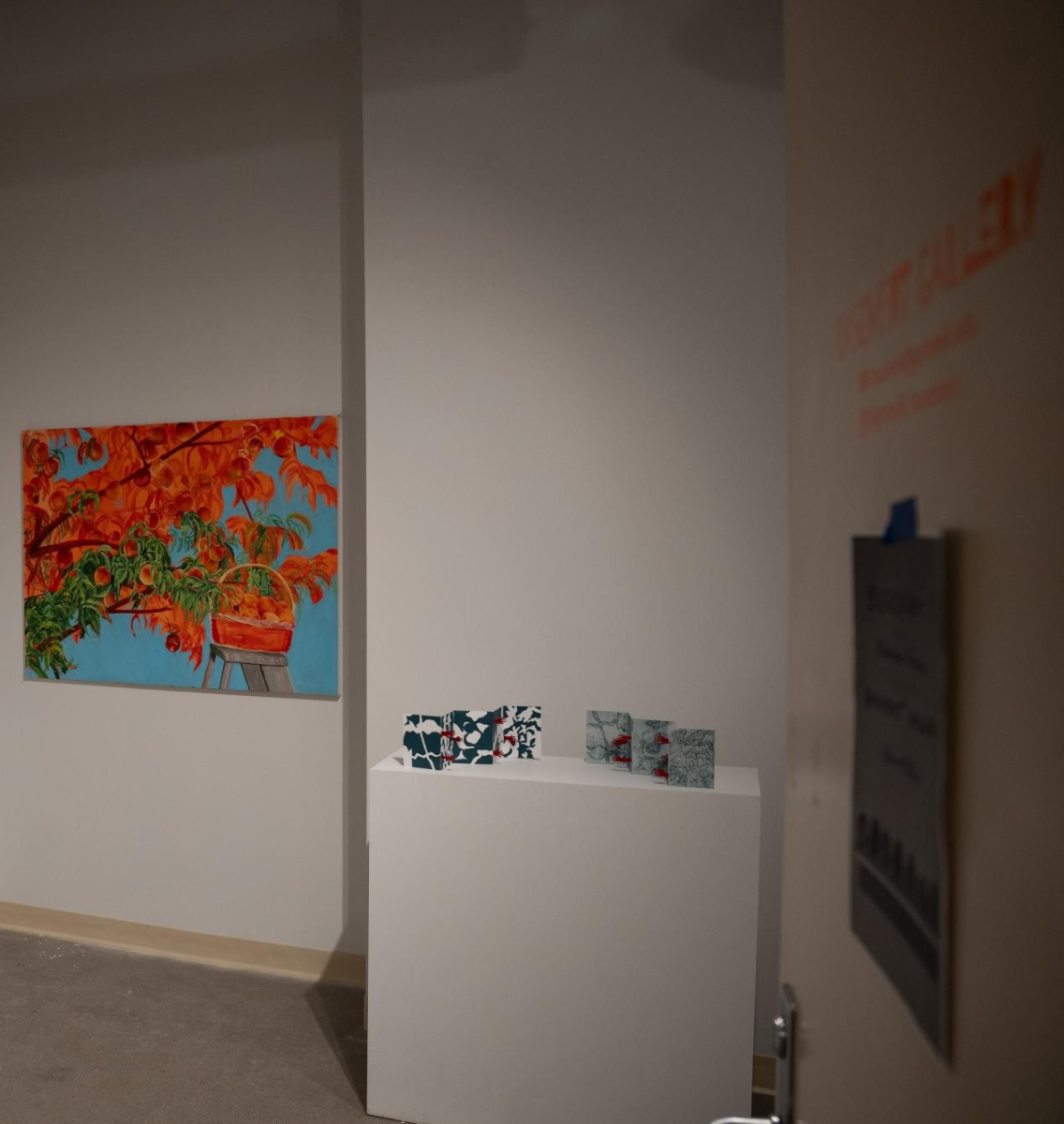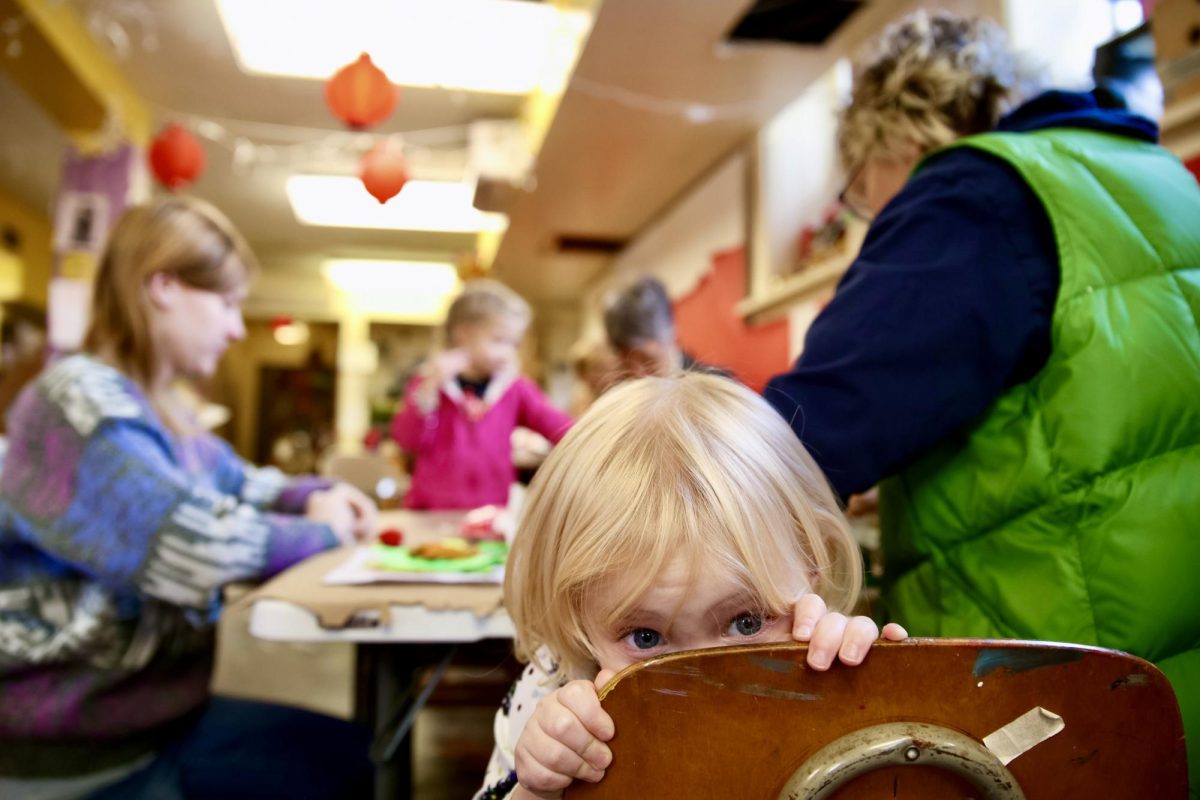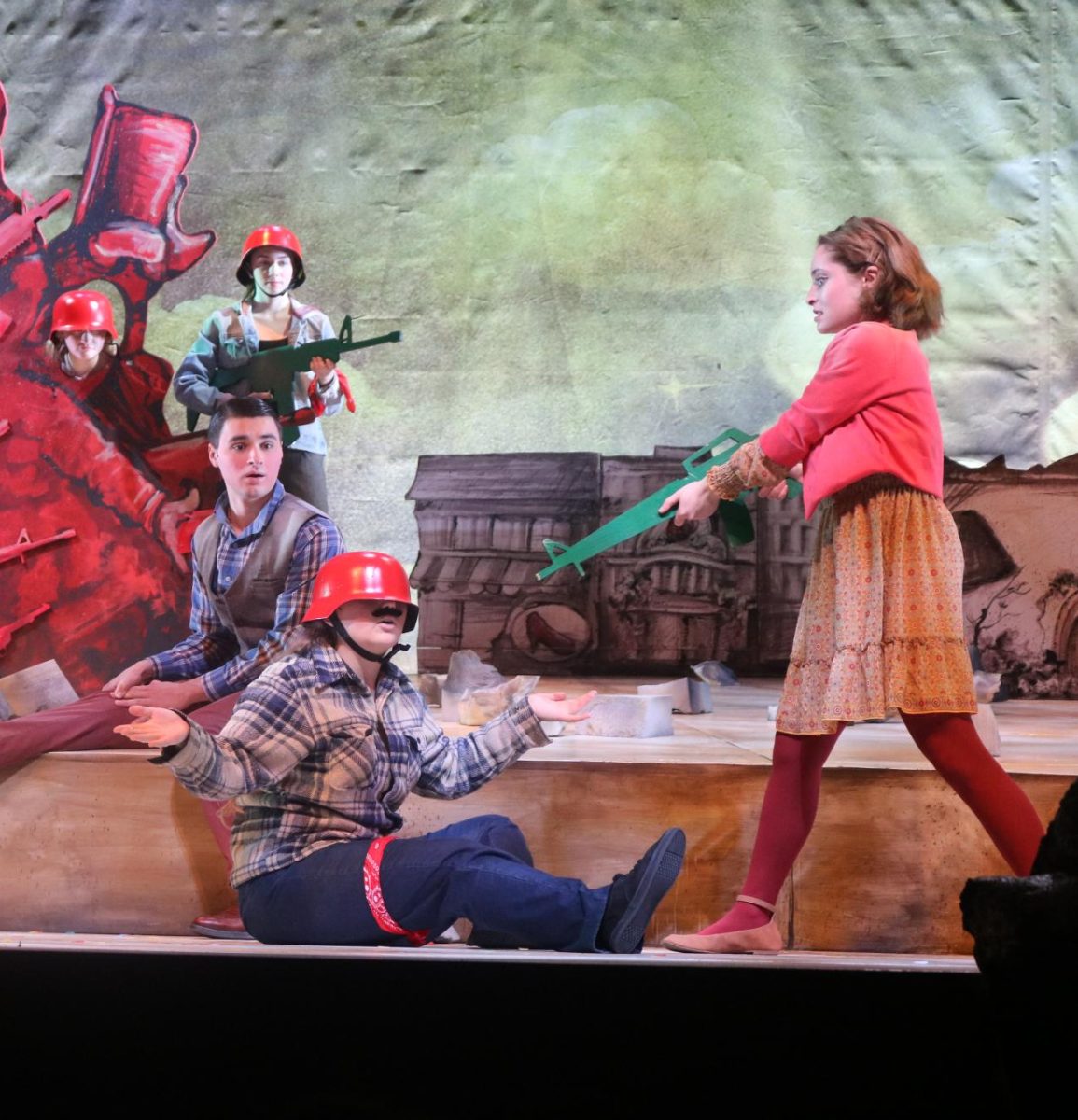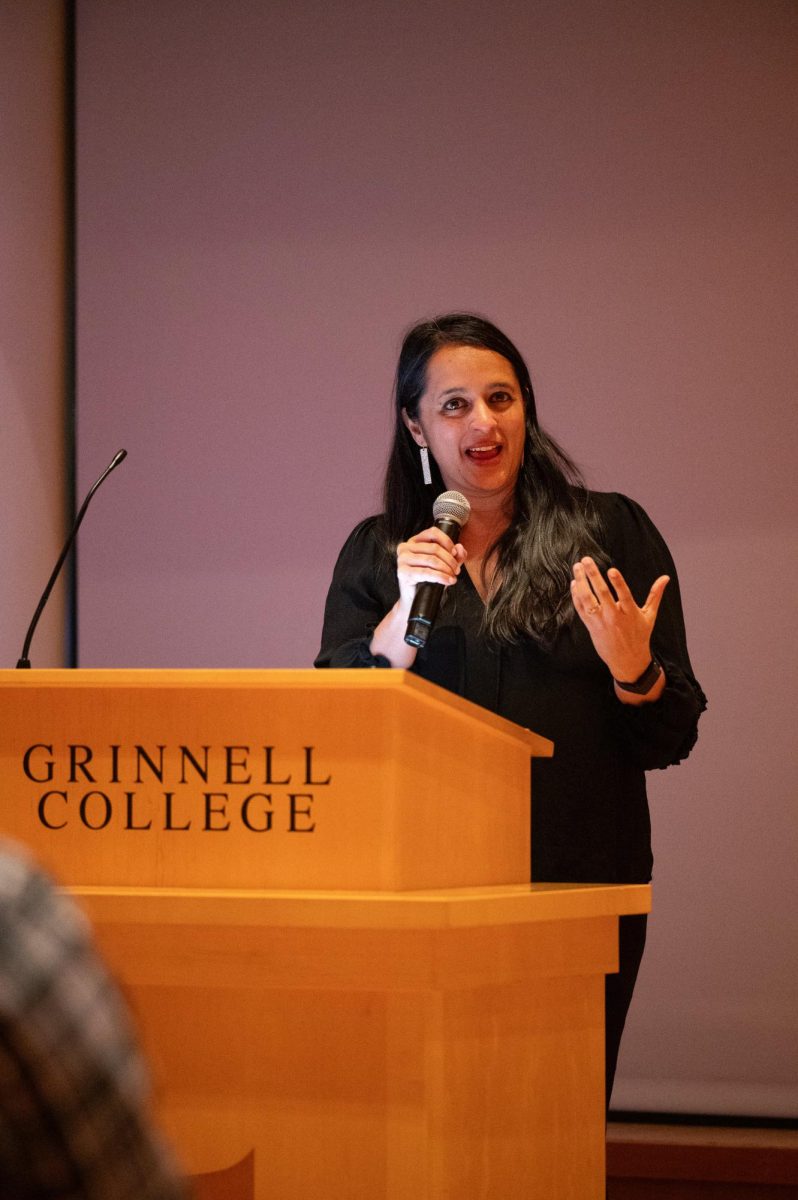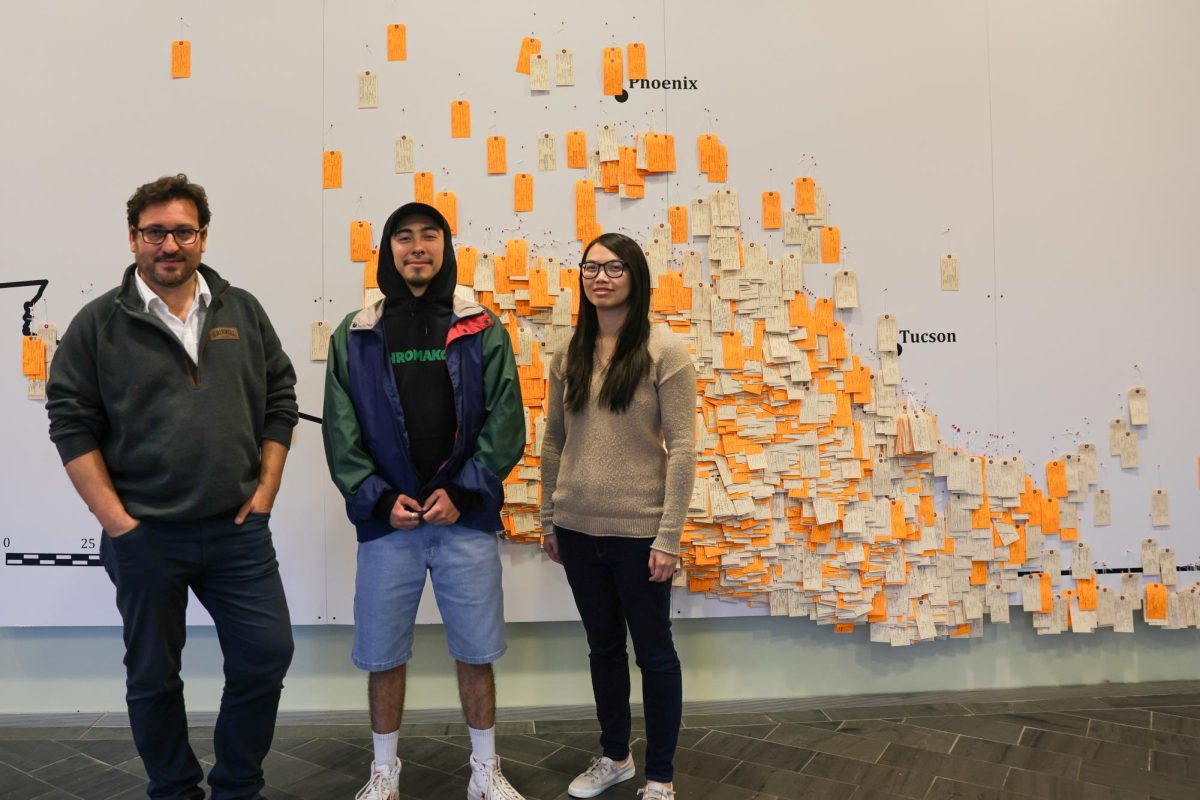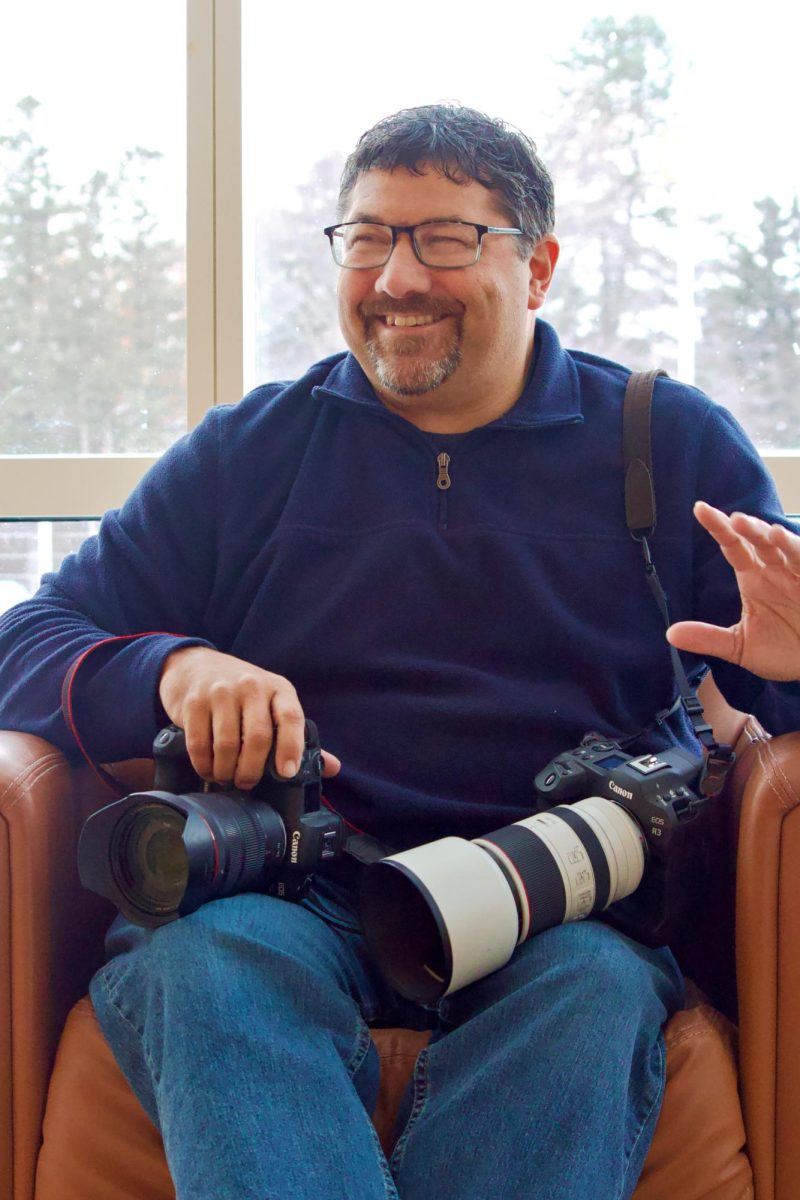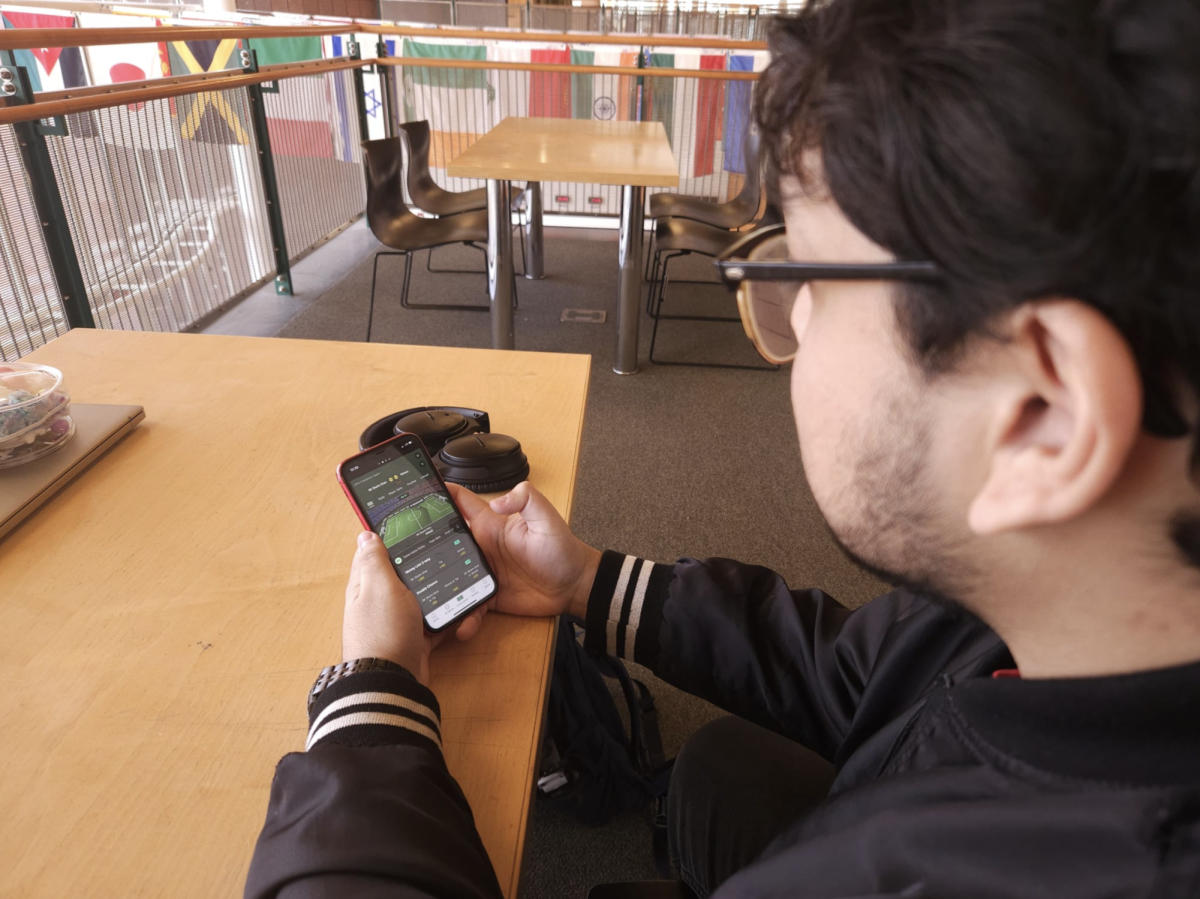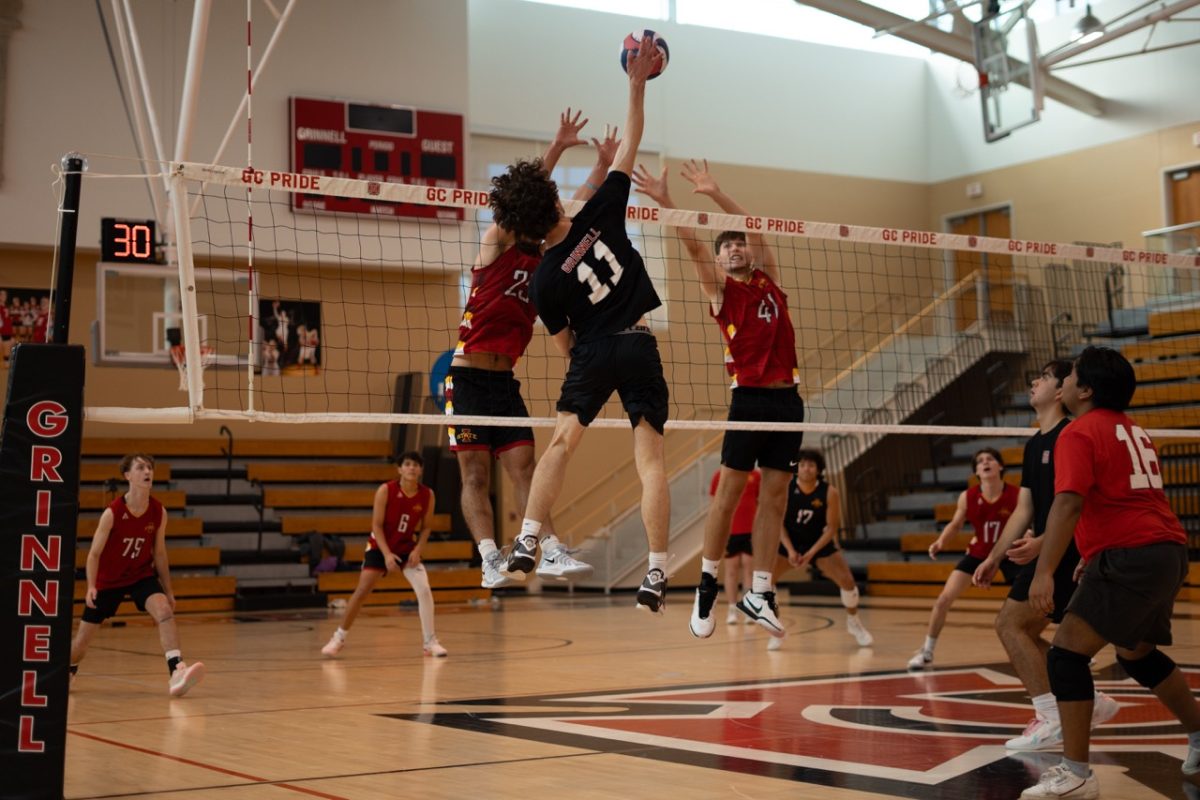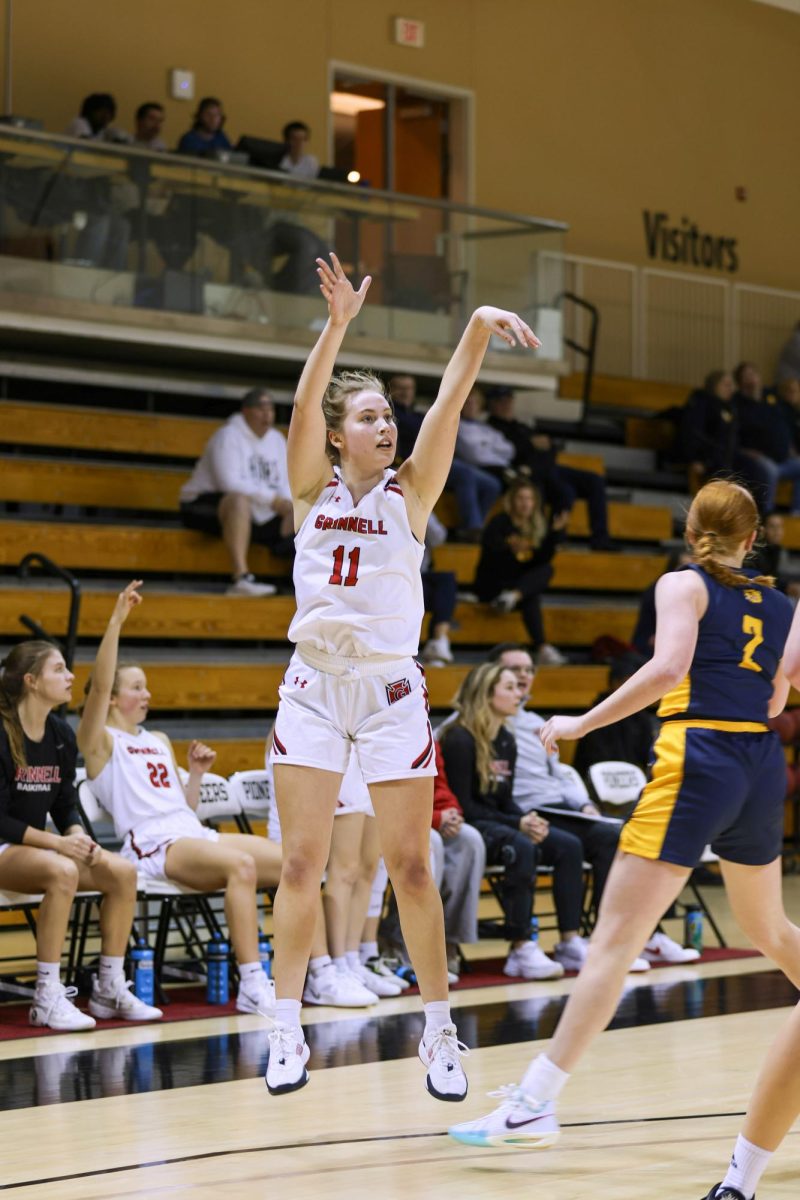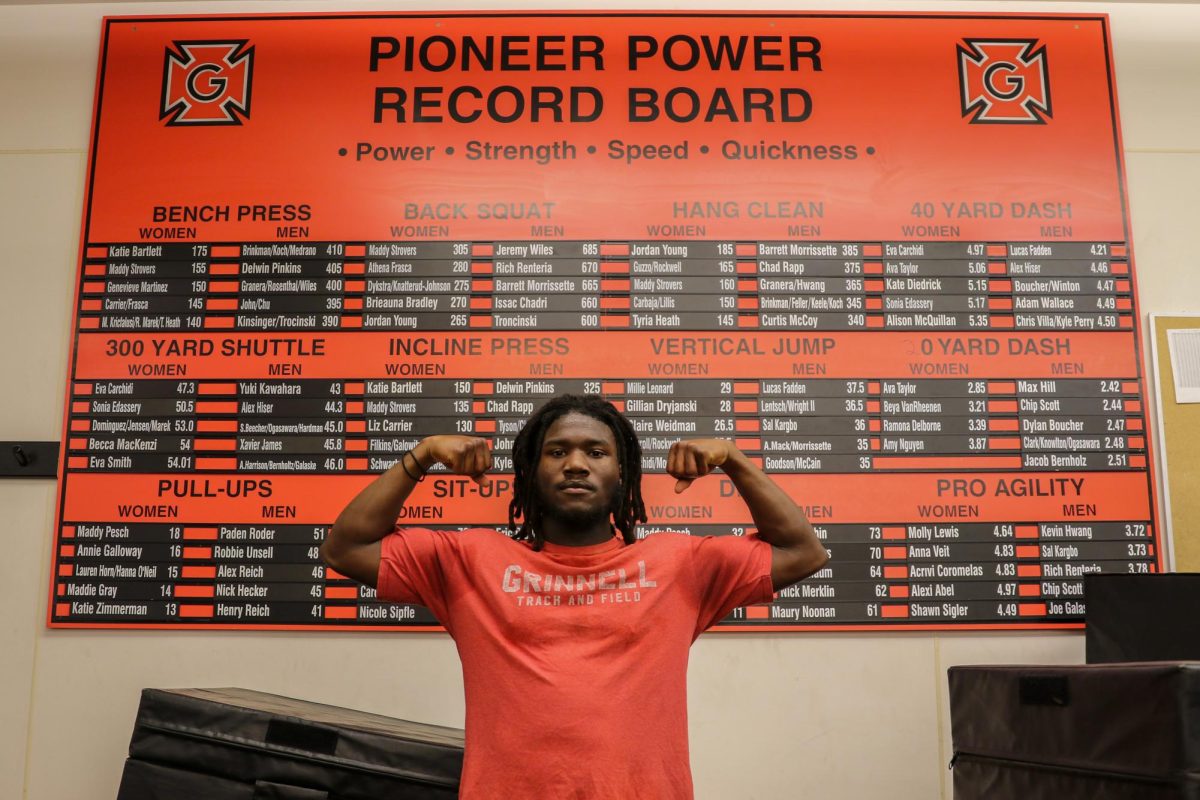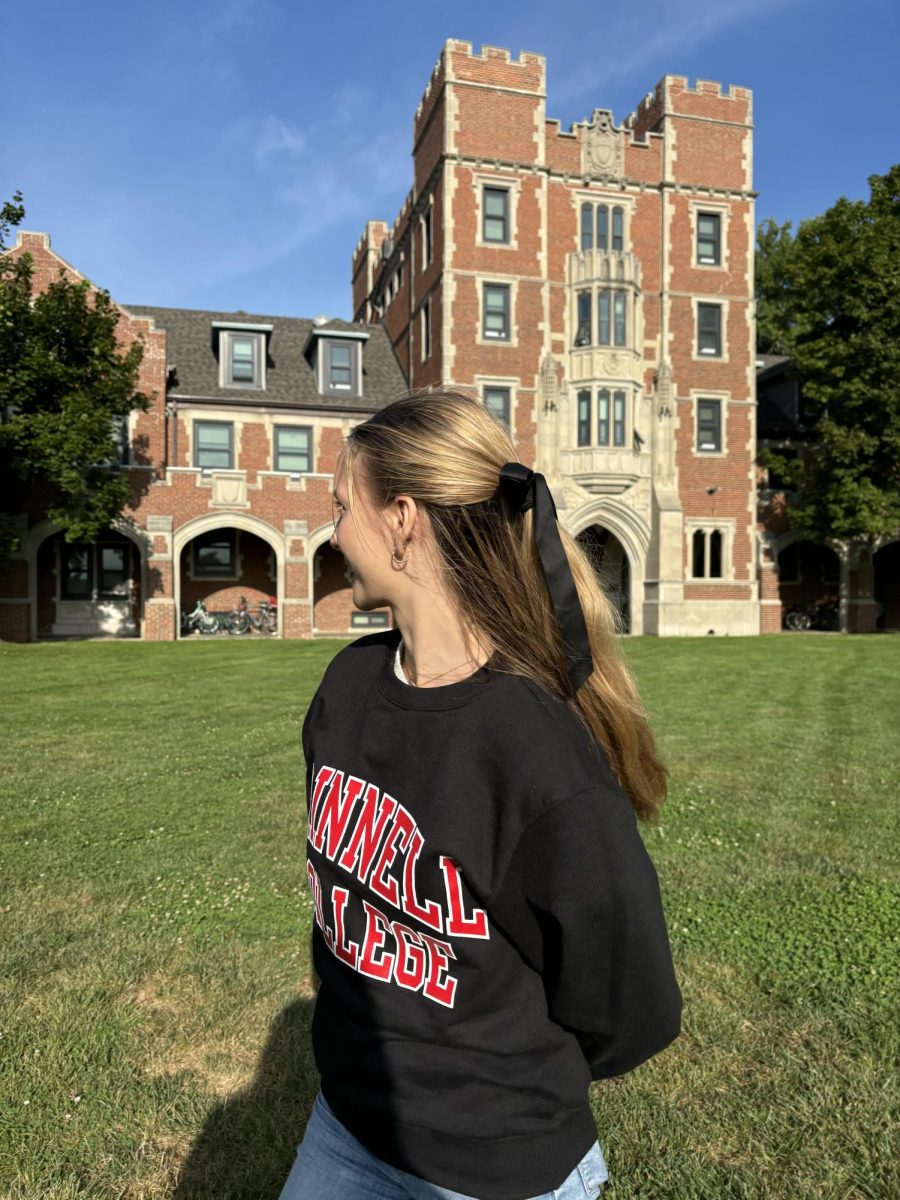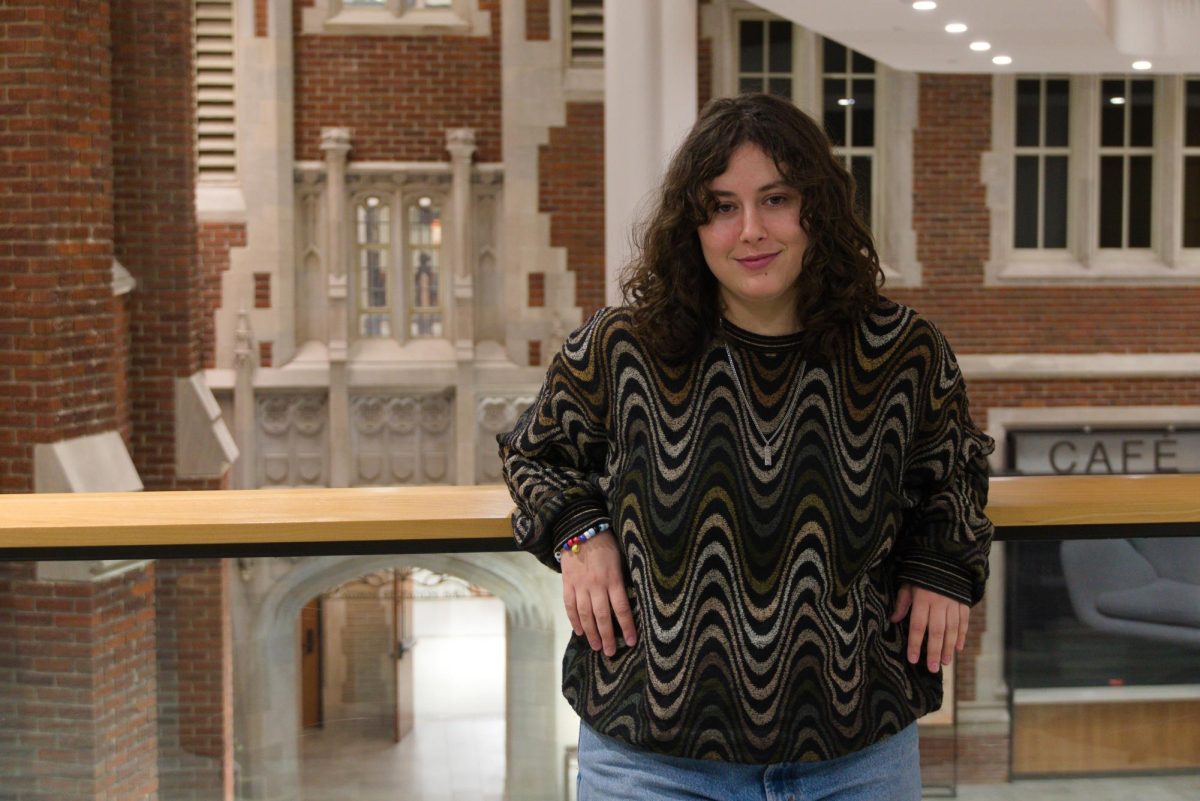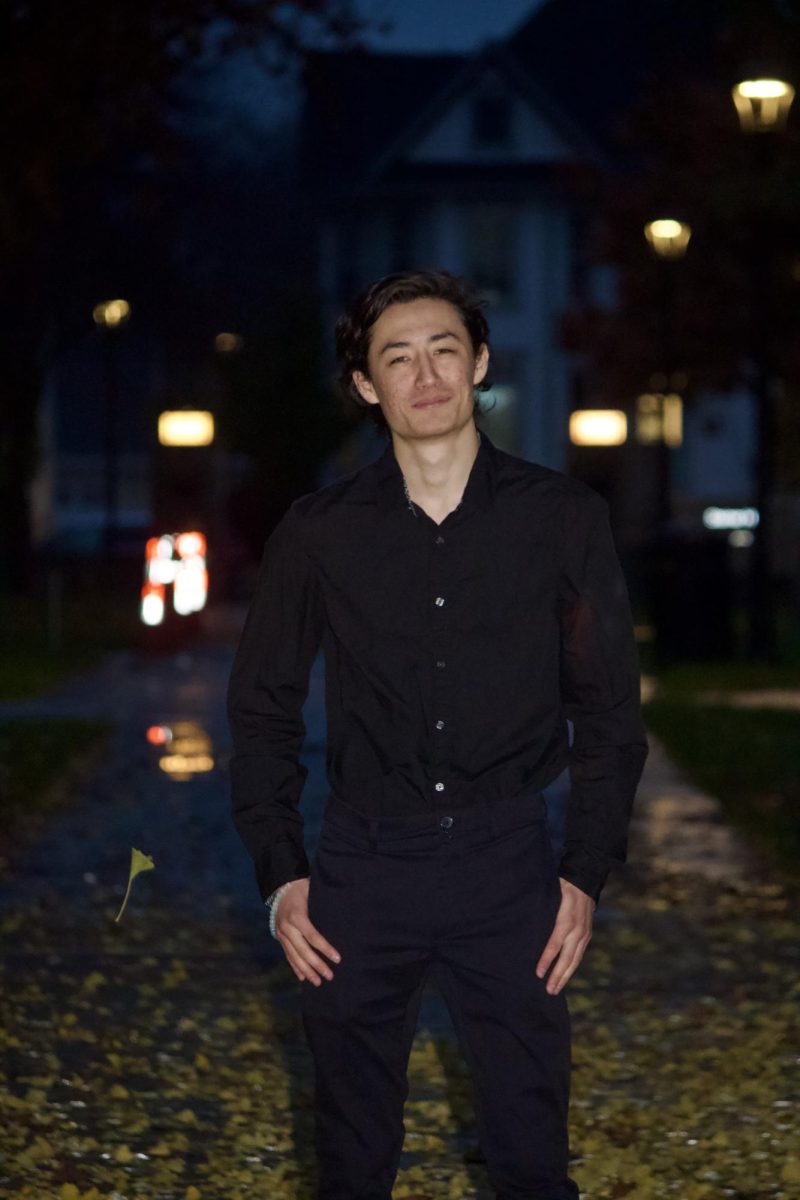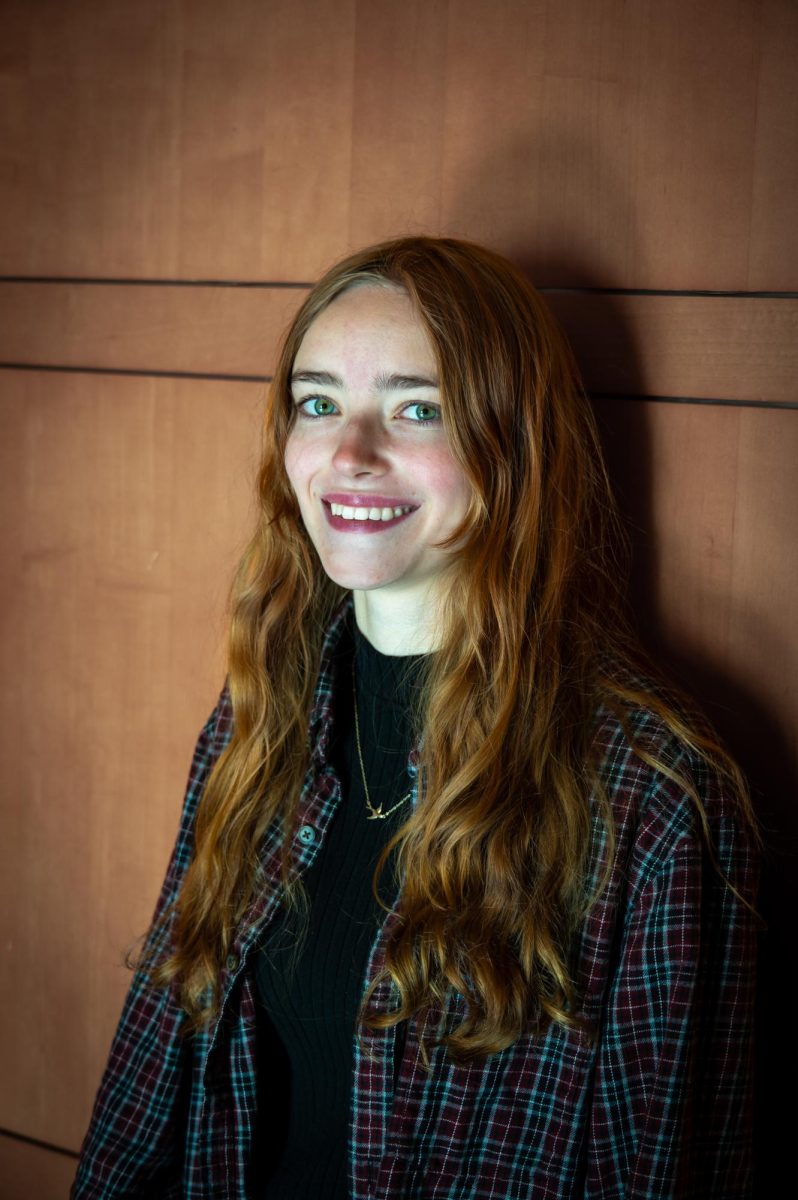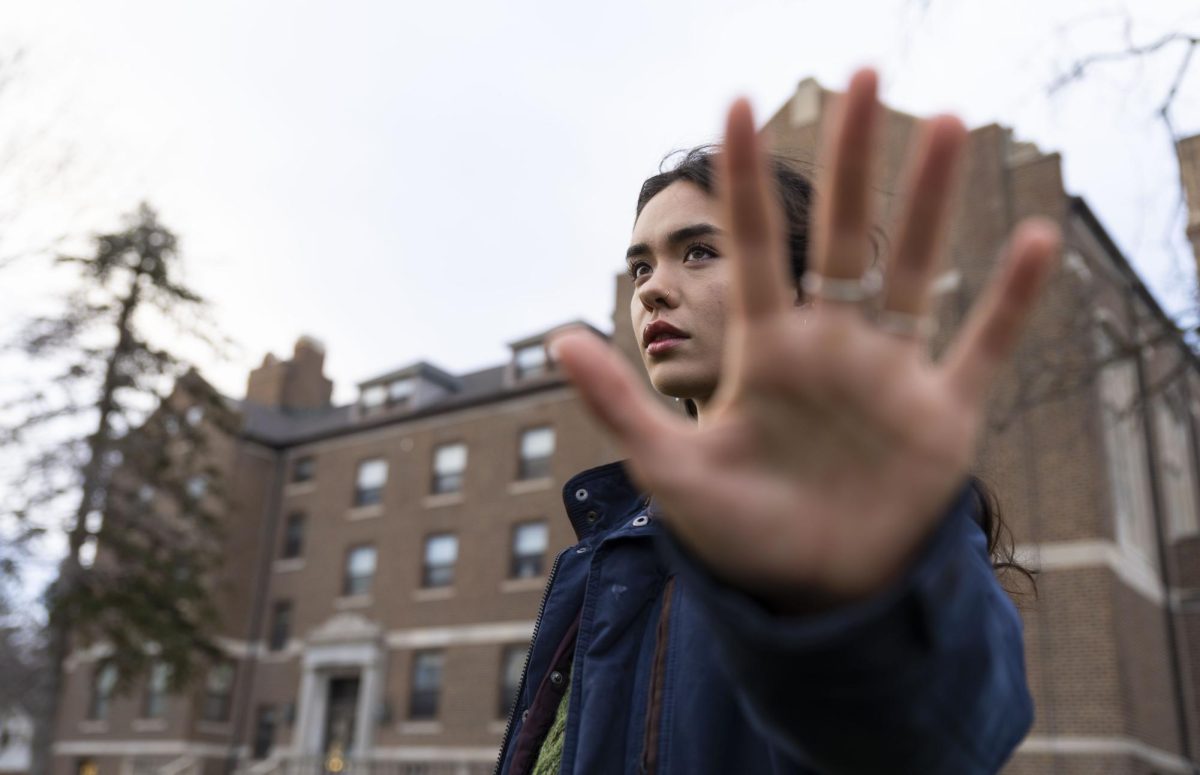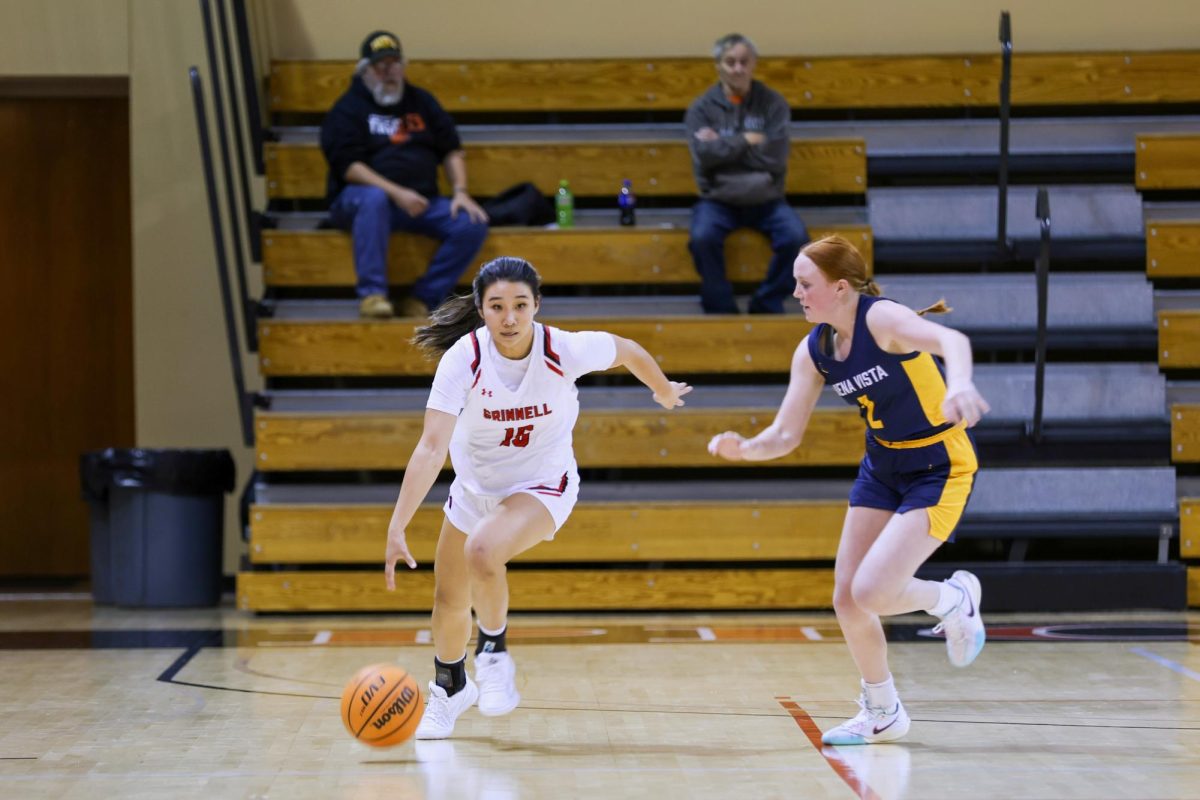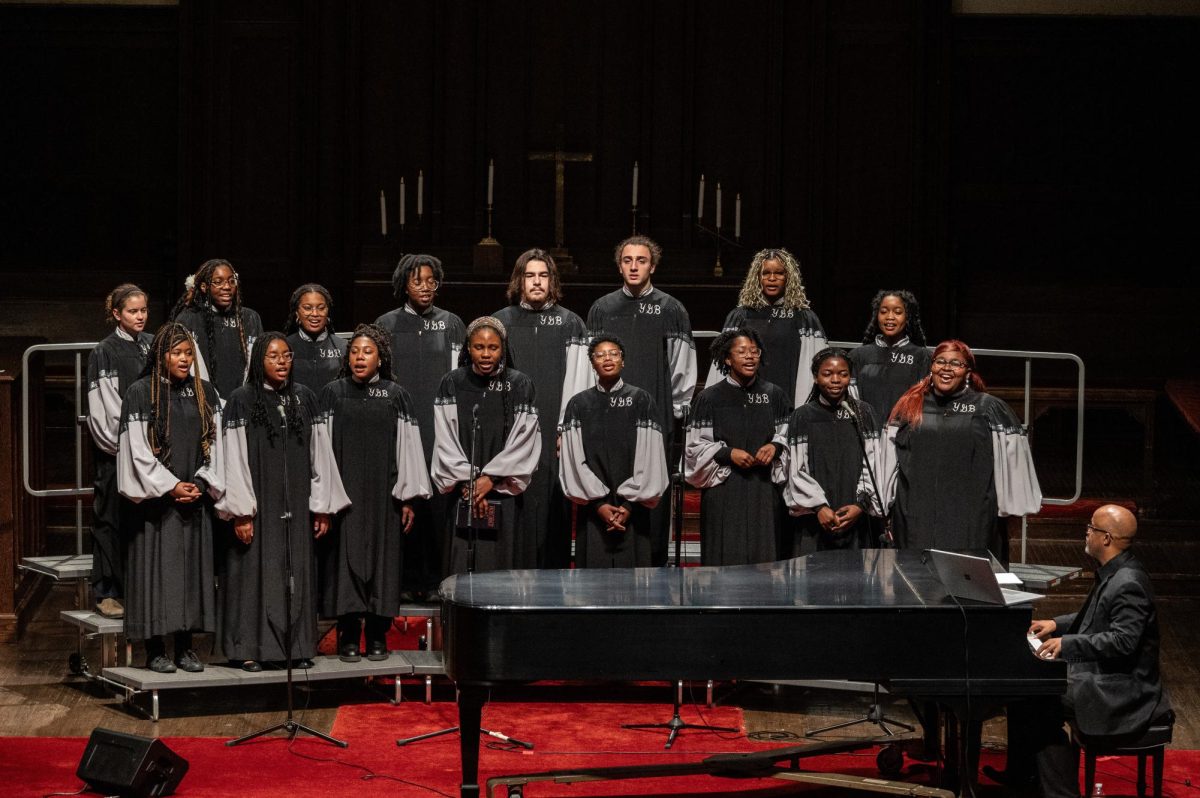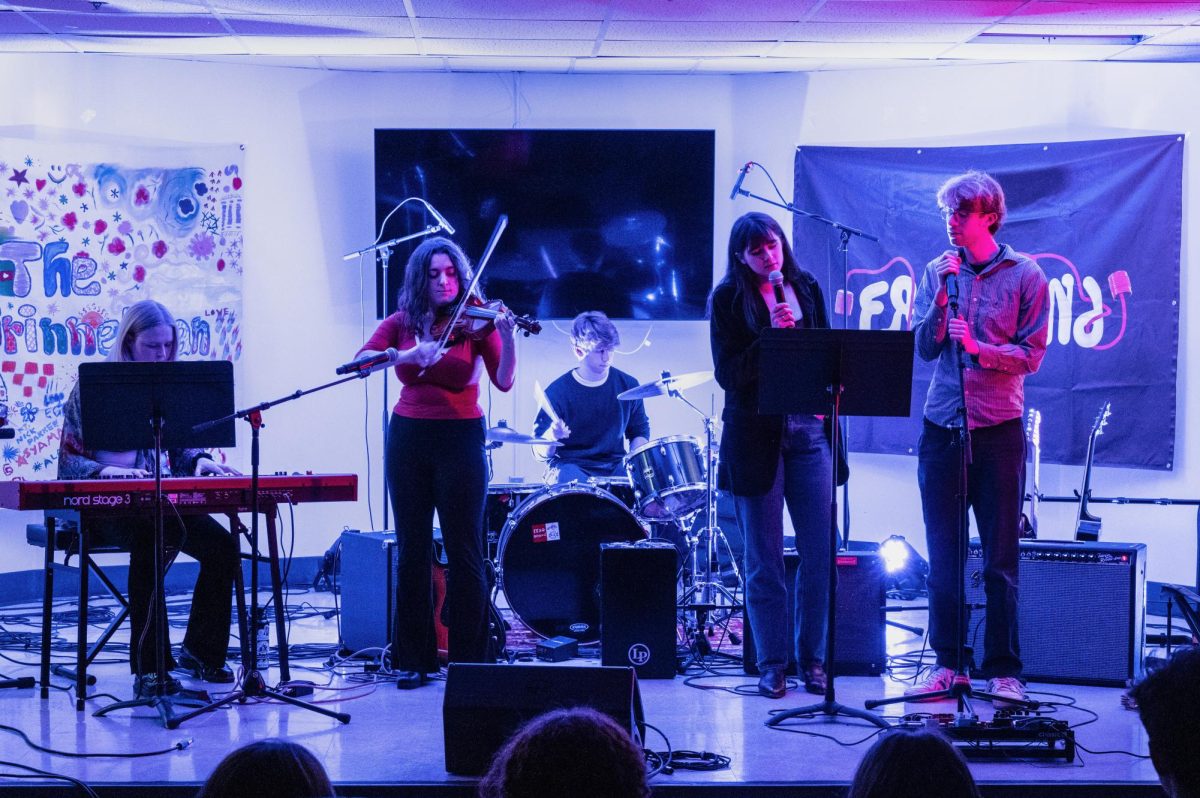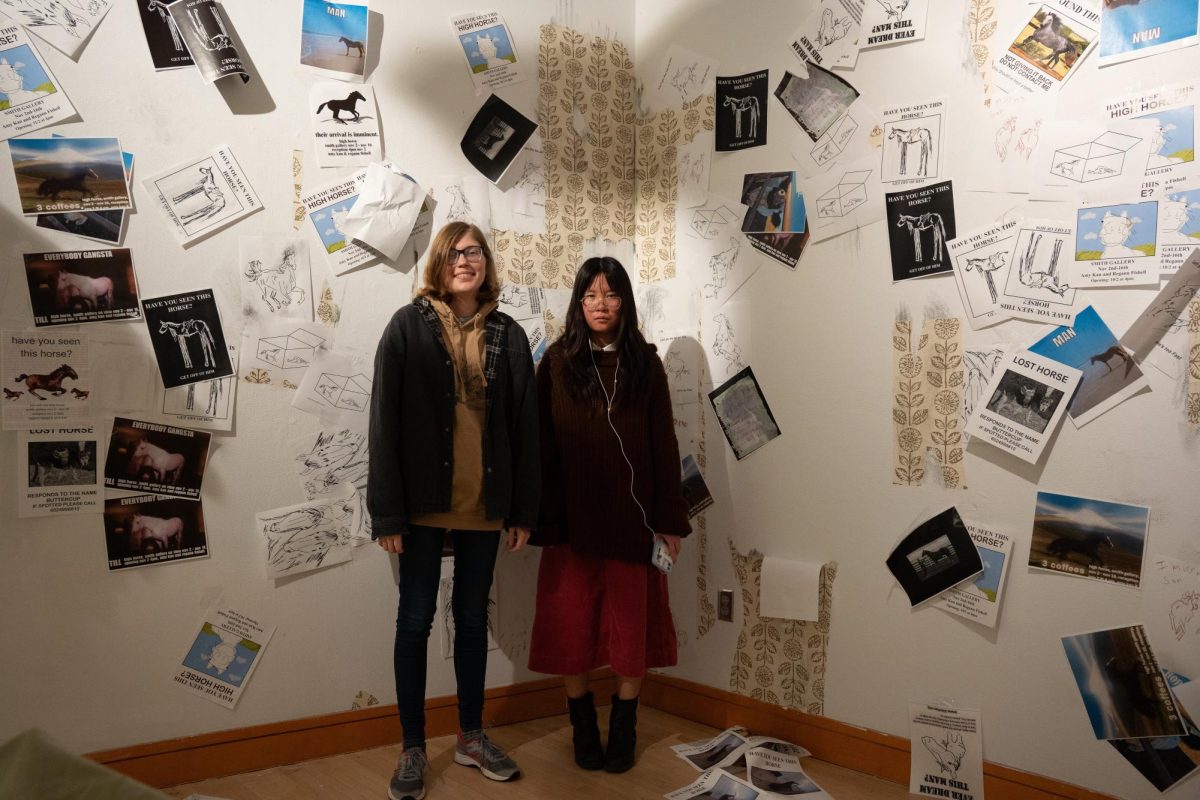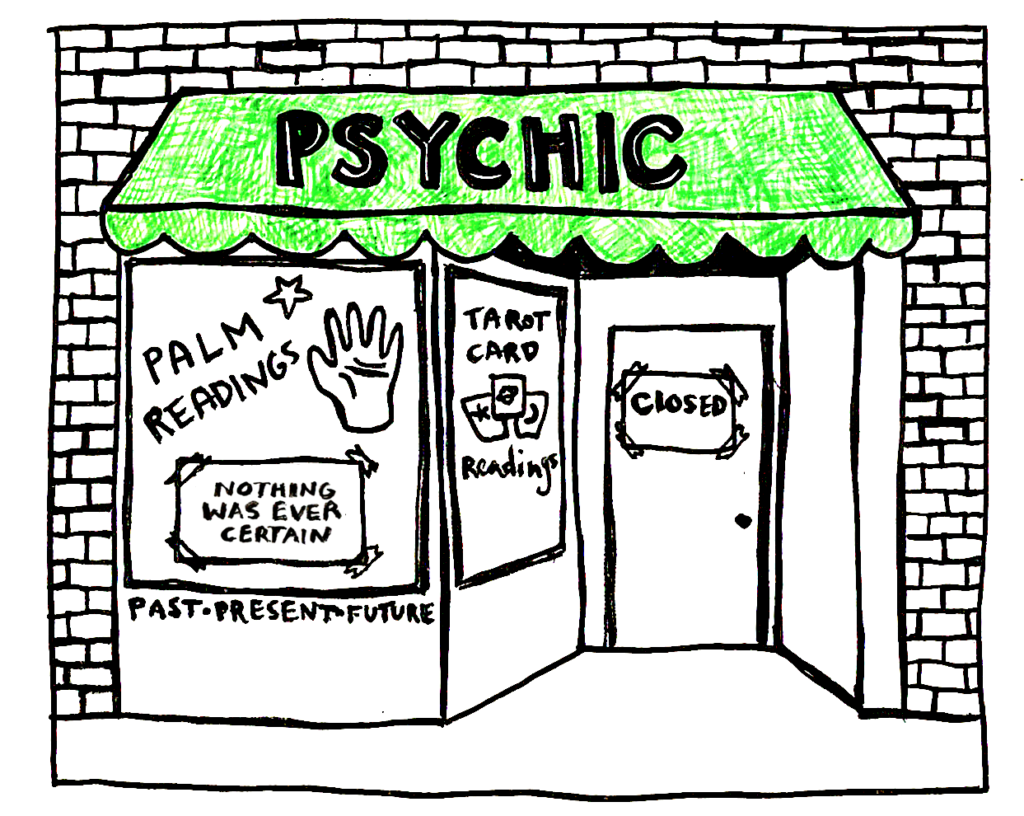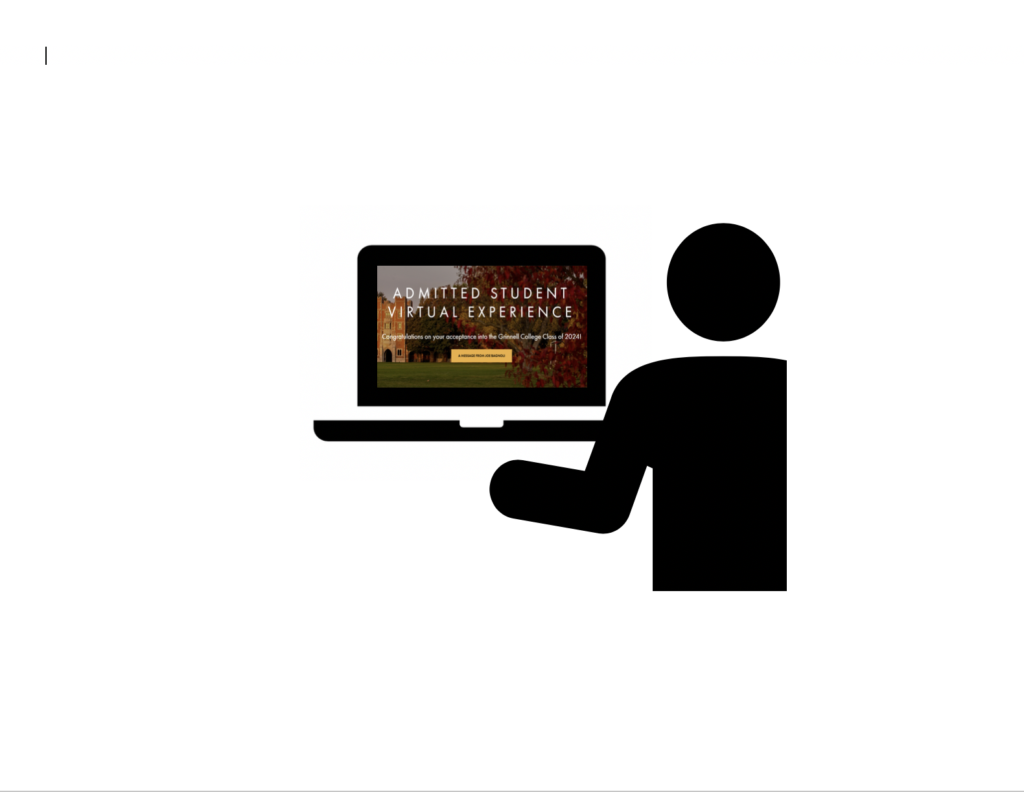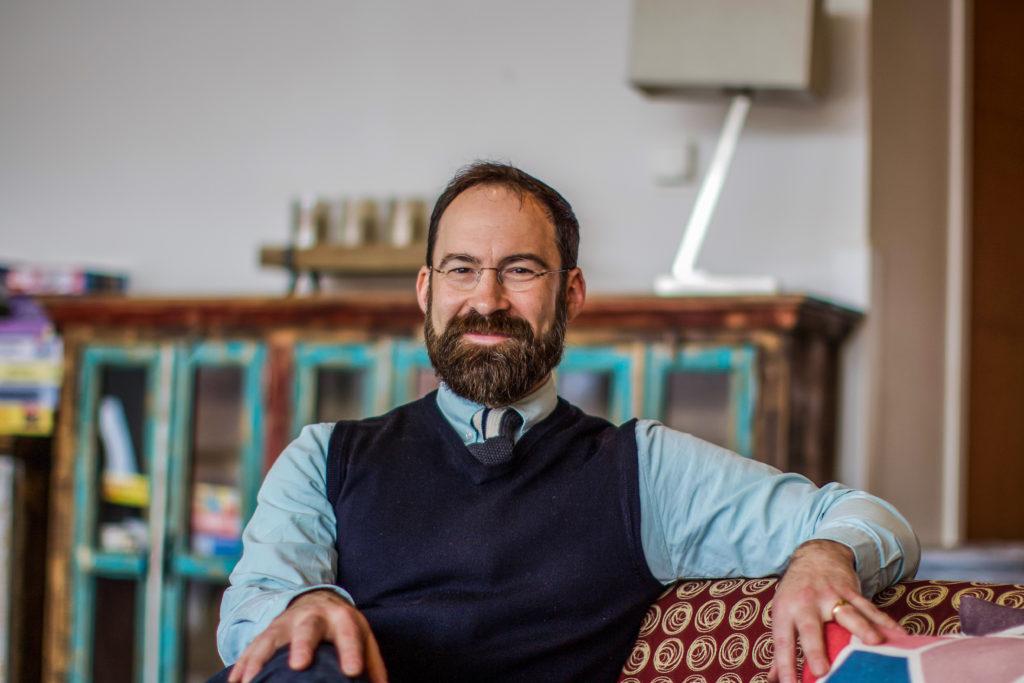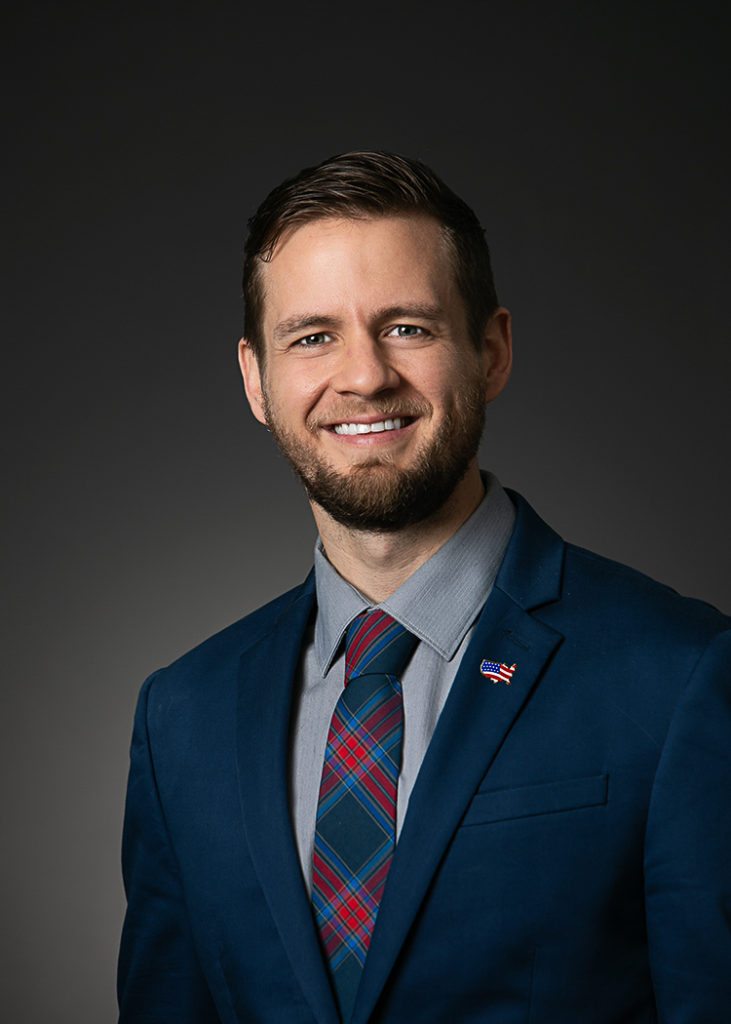Vincent Benlloch
benlloch@grinnell.edu
Continuing Grinnell’s tradition of in-house artist residencies, U.K. sculptor John Gerrard graced our campus for the past week. In addition to offering up his time bar-side at Lonnski’s Pub and Deli earlier in the week, Gerrard’s 2008 piece, “Grow Finish Unit,” is prominently displayed in Faulconer Gallery’s latest modern exhibition.
An interactive virtual sculpture, “Grow Finish Unit” is a pixel by pixel virtual scan of a series of pig fattening pens in Elkhart, Kan. that Gerrard and his team have meticulously recreated down to each minute detail, including a daily orbit that follows the local time in Elkhart and a truck that will appear and check on the pens every nine months, just as with the real unit.
“Working in the frame of the virtual, I was interested in using that medium to explore equally virtual realities. There are certain synthetic layers to the piece itself. The site was majorly effected by the Dust Bowl and lost a majority of its topsoil, leaving it derelict,” Gerrard said.
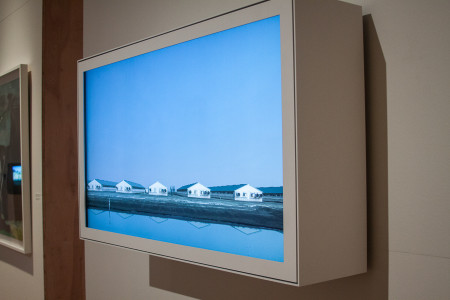
Production and consumption in the modern context, two concepts that a majority of Gerrard’s work explores, also had a large impact on the creation of interactive virtual sculptures
“These [pig fattening pens] are essentially battery packs for the modern world. Sites like these produce the majority of protein for the world. We’ve reproduced the local orbit of the sun as it would be viewed in Kansas and paired it with this orbit of consumption,” Gerrard said.
Gerrard outlined the cyclical and symbolic moment of exchange, wherein the trucks would enter this sterile landscape every nine months and remove the fattened pigs for slaughter and consumption. Both the sterile landscape and the utility of the space rendered it surreal and entirely virtual in his eyes, which is apparent to the viewer of his work.
In addition to his exhibited piece, Gerrard also gave a provocative lecture on his own artistic history and development. He amused the crowd with a humorous anecdote regarding the lengths he traveled to survey a Google data farm.
“I came across an article regarding the rise of data servers that are popping up all over the American landscape. It reminded me of the same agricultural and productive units I had worked with,” Gerrard said. “One of the big underlying functions of these sites is a consumption of the public, a farm with two faces, with nothing ethereal about it.”
Captivated by the symbolic nature of consumption, Gerrard reached out to Google in the hope of surveying the site for a new piece but was directly turned down. Undeterred by the initial rejection, Gerrard and a cameraman chartered a helicopter and succeeded in gathering enough data to produce an image, but not without frightening a security guard that hounded them in a Go Kart around the premises.
The stunt got him featured in the Guardian and opened a discourse on privacy and surveillance with regard to humanity’s own relationship to its consumption, whether agricultural or technological. These issues are also at the forefront of his work, now on display in Faulconer Gallery.
